Brothers puts on a good old-fashioned farm show Family members are happy to return to their roots

Grandpa’s tractor is still running in the family History and horsepower — a roundup of local tractor clubs


Brothers puts on a good old-fashioned farm show Family members are happy to return to their roots

Grandpa’s tractor is still running in the family History and horsepower — a roundup of local tractor clubs


















Farmers and ranchers, the world relies on you. And you deserve a bank that’s rooted in the details and dedicated to helping you do more.



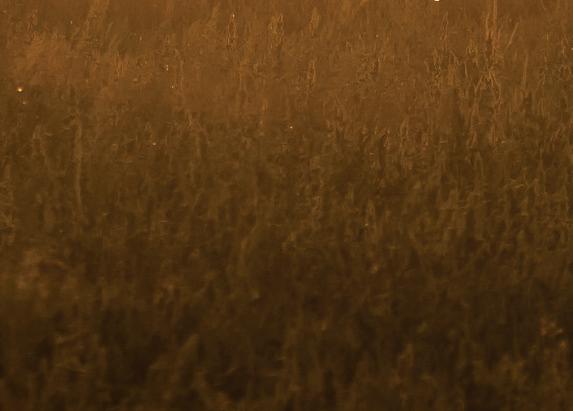
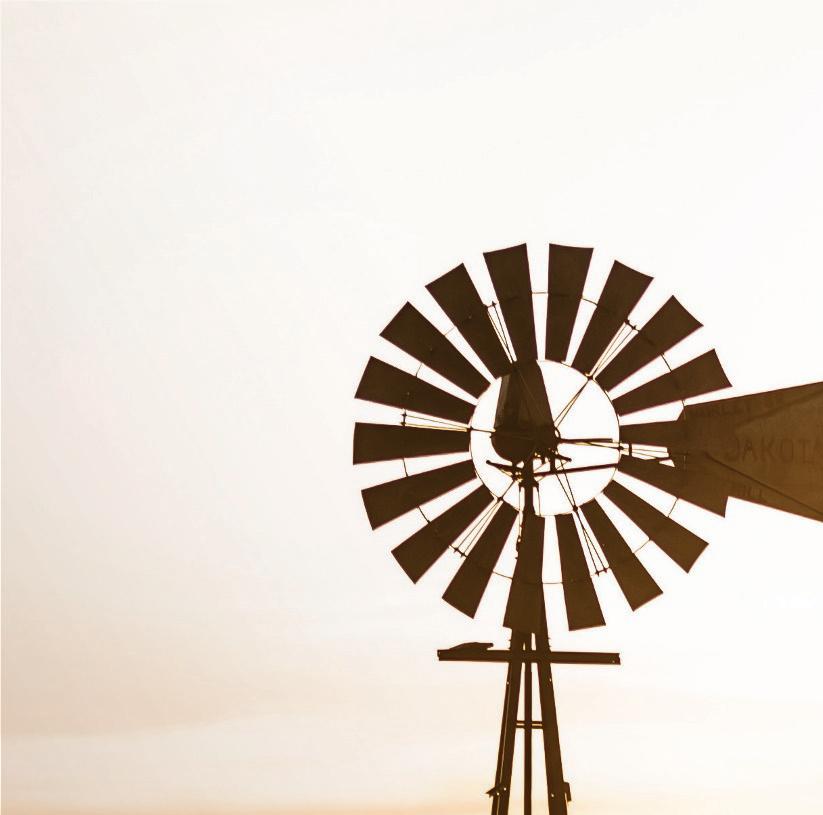


Publisher/Ad Director Jennifer Heintzelman
Contact Jill Reyna at 815-631-8774 or jreyna@saukvalley.com
Published by Sauk Valley Media
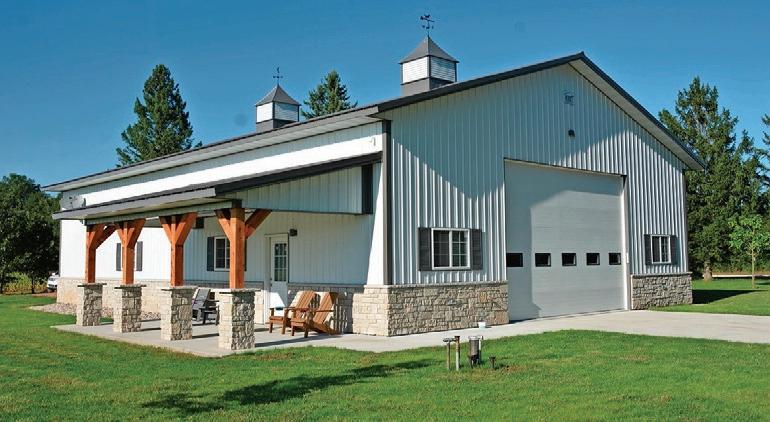
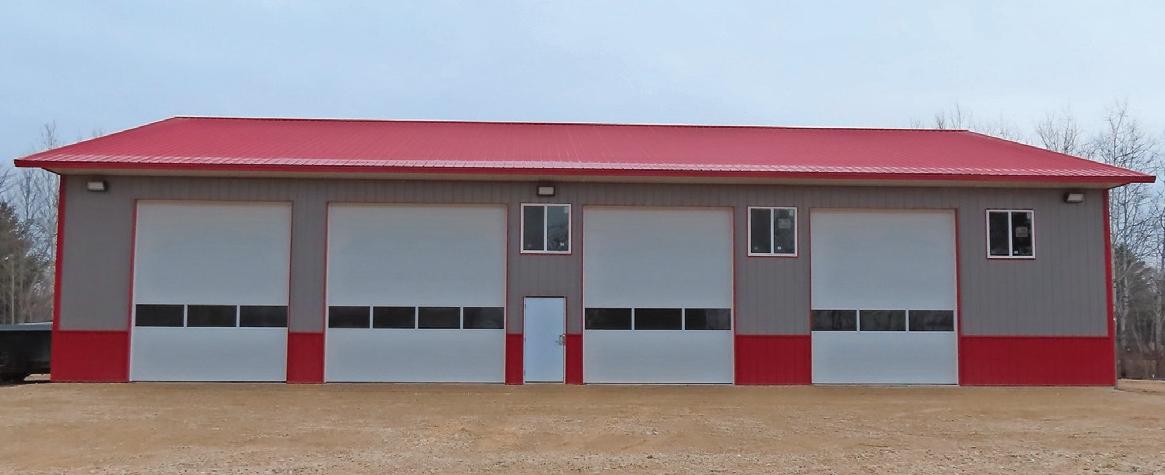
113 S. Peoria Ave., Dixon, IL 61021 815-284-2222 Have
Articles and advertisements are the property of Sauk Valley Media. No portion of Ag Mag may be reproduced without the written consent of the publisher. Ad content is not the responsibility of Sauk Valley Media. The information in this mag azine is believed to be accurate; however, Sauk Valley Media cannot and does not guarantee its accuracy. Sauk Valley Media cannot and will not be held liable for the quality or performance of goods and services provided by advertisers listed in any portion of this magazine.
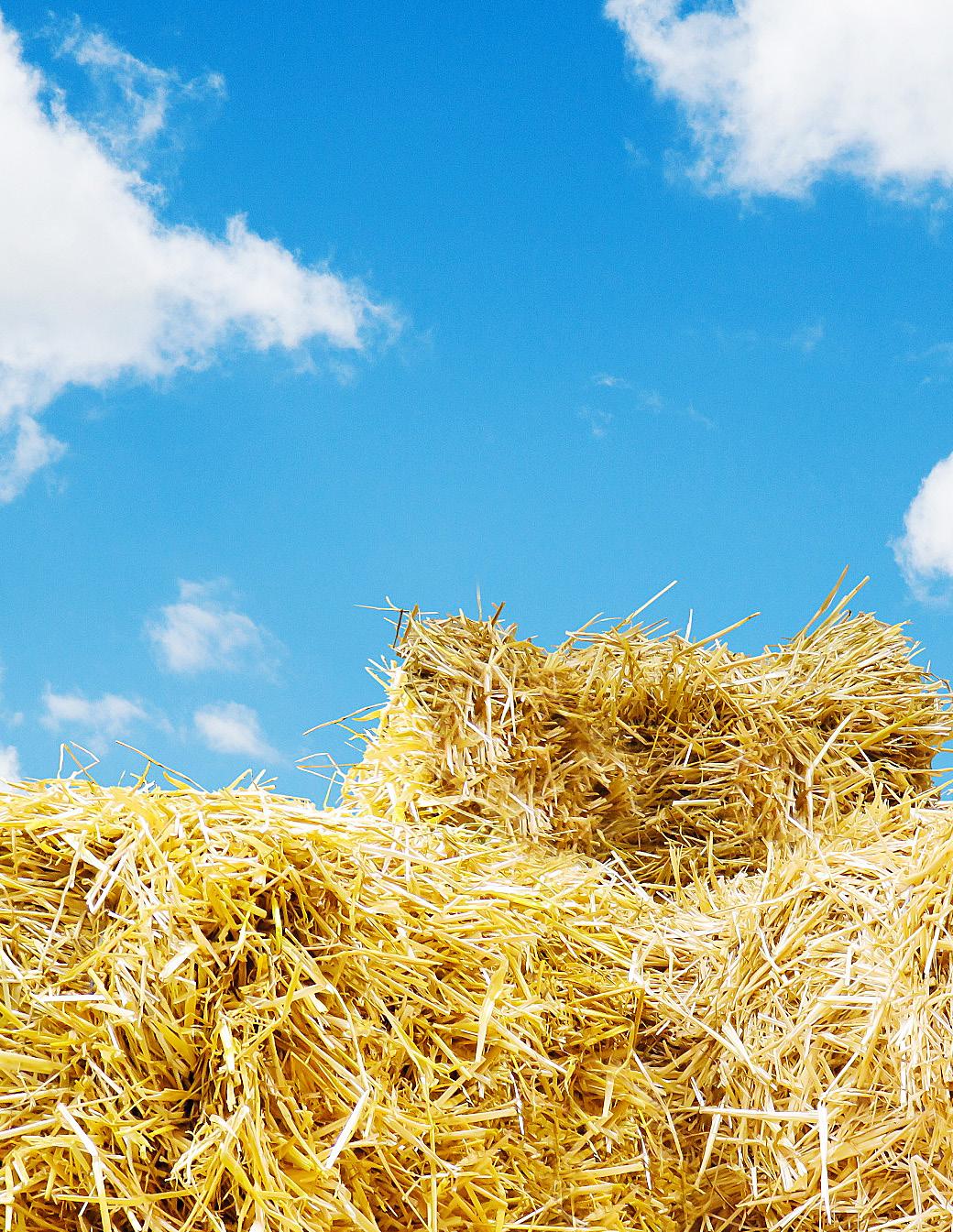


MOUND — He’s a hard worker earning money in a field that he loves with his own growing business and customers who respect him. He couldn’t ask for better parents and he’s got a support system who would drop everything to help him. And he’s young and in love.
Some might say that Connor Brown is in his heyday.
But as far as he’s concerned, the best is yet to come. Brown, 21, of Elizabeth, has traversed the hilly terrain in Illinois’ northernmost points in Jo Daviess County for the past two years scooping up inventory for his business, Brown’s Baling and Hay, and those hills aren’t the only ups and downs he’s dealt with. Like other businesses owner, Brown has faced his share of challenges, but they don’t bring him down — they bring him pride..
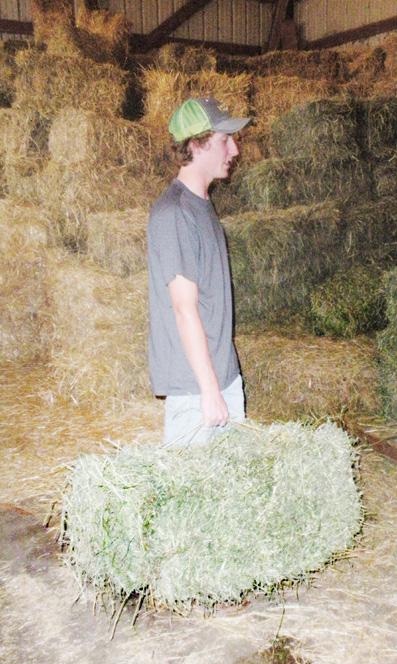
“You run into constant problems,” Brown said. “It sucks, but at the same time, at the end of the day when you get caught up, you’ve fixed the prob lems and it’s something a little more rewarding. You’ll have days where everything goes right, but very rarely does that happen. Anybody in the ag commu nity can tell you that. It’s a constant to stay ahead. It’s enjoying. It’s rewarding.”
“A lot is patience and determination,” he said. “When the weather is not co operating with you, you got to have patience that it will. Through all of the challenges, you have to tell yourself that you are going to get through it.”
Connor Brown of Elizabeth is the young man hauling the hay baler from field to field to harvest the inventory for his business, Brown’s Baling and Hay. How did he find his flare for farming? It found him. “If farming’s in your blood, and you have a drive for it, it will find you,” Brown said.





 CODY CUTTER/CCUTTER@SAUKVALLEY.COM
CODY CUTTER/CCUTTER@SAUKVALLEY.COM
Hay baling isn’t easy, but Brown has a strong support system in his parents, David and Dena Brown of Elizabeth, his girlfriend, McKenna Peart, and her parents, Kenneth and Jolleen Peart, of Scales Mound. Con nor uses space at the Pearts’ farm to store equipment and hay.
“I couldn’t ask for better parents, especially my dad coming from a farming background. He will drop everything to help me. My girlfriend is going to college right now to be an ag teacher, and she would drop everything to help me as well, as well as her dad, Ken. It’s phenomenal, the support I have. When I get to those days when I can’t find anyone to help, I’ve got somebody, because no matter who I call, they’re going to be there to help me. A lot of people don’t have family or friends like that, but I’m blessed that I do. I couldn’t do this by myself. It’s impossible. It’s amazing.”
When Connor’s father bought a 5-acre field near Elizabeth in 2020 and was looking for someone to bale hay, Connor heard opportunity knocking.
“He was looking for someone to make the hay,” Connor said. “I’m like, ‘You know what, I’ll make the hay.’ I bought a tractor, I had a piece of ground, but I had no equipment, so I borrowed everything, figured it out the first year, and then started building from there.”
David once was a hog farmer, and Connor would help out at Dittmar Farms and Orchard in rural Elizabeth when he was young. Connor graduated from River Ridge High School in 2019, earned his American FFA Degree 2 years later, and also has a welding certificate from High land Community College in Freeport. He worked for a welding business in Gratiot, Wisconsin, for a couple of years concur rently with the baling business before focusing on his true passion: living and loving the farm life.
It takes some elbow grease to keep hay bal ers running like a well-oiled machine. Brown uses a New Holland 565 baler that’s about 30 years old, and a New Holland 316 that's about another decade older. “If you got a nice ma chine that you take care of and makes good bales, it doesn't matter how pretty it looks, it doesn't matter how new it is; all that matters is how good of a product you can pump out,” he said. “I spent a lot of time adjusting them to make the bales how my customers like them.”
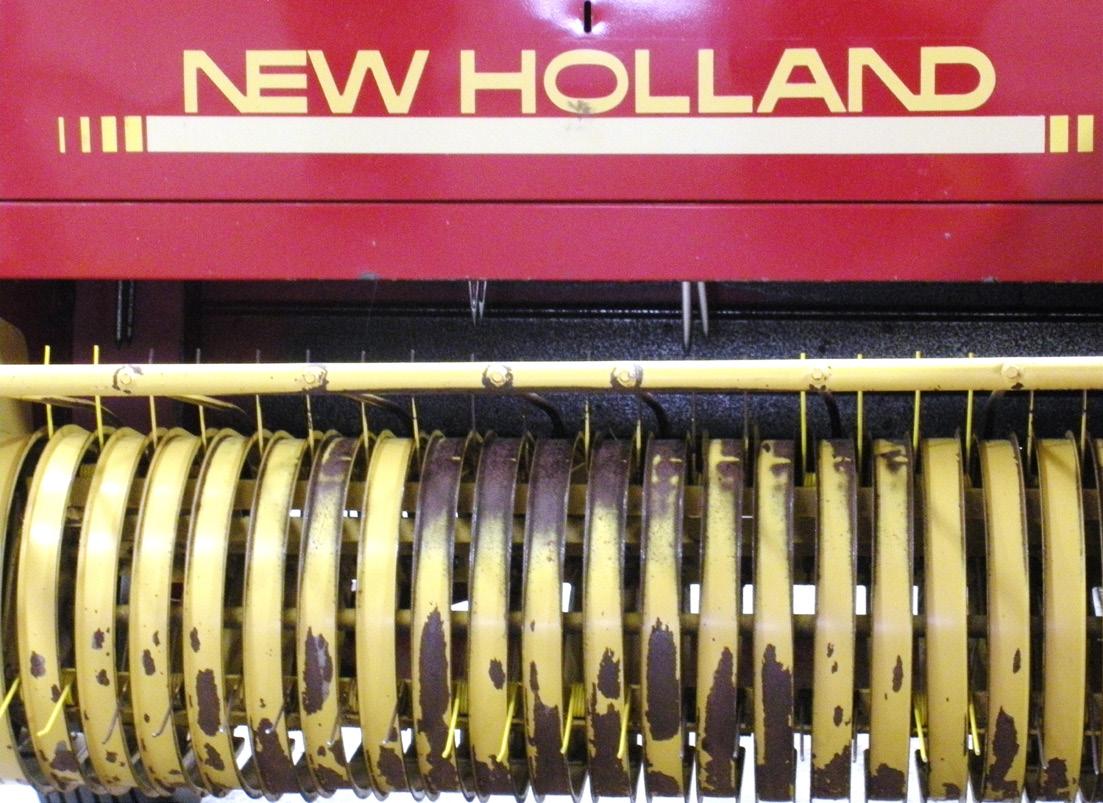







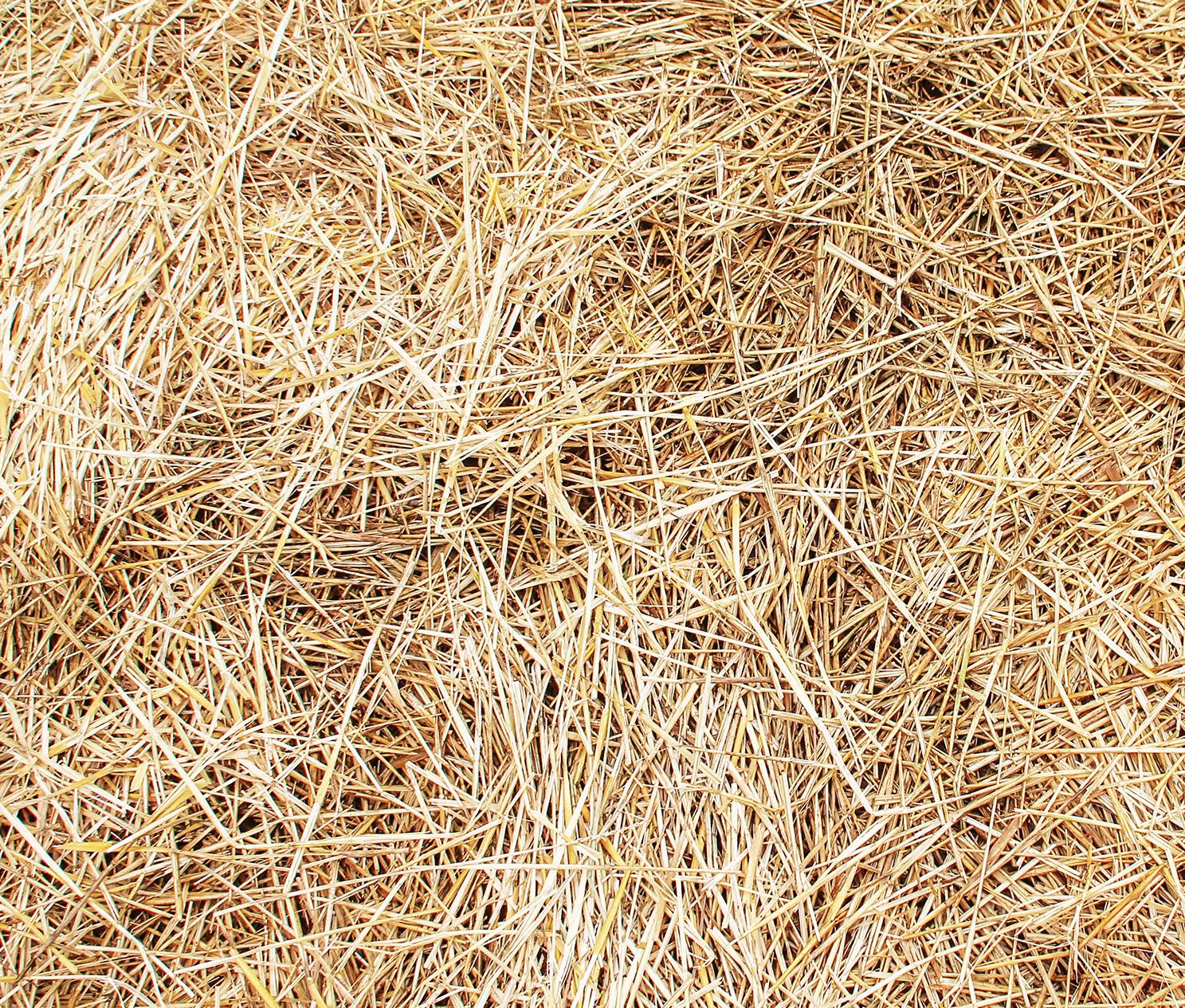
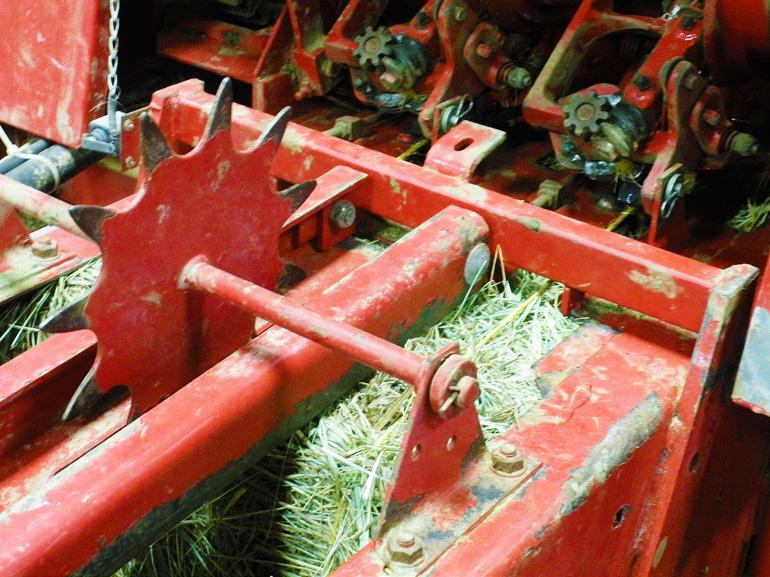 CODY CUTTER/CCUTTER@SAUKVALLEY.COM
CODY CUTTER/CCUTTER@SAUKVALLEY.COM
“If farming’s in your blood, and you have a drive for it, it will find you,” Brown said. “It found me, and when I started dating McKenna, I got introduced to bigger operations. I never got tired of it. When I was welding, I would weld 8-9 hours a day and then I’d come here and work as late as pos sible, whenever I could do it. It’s fresh air. I love the cattle. I love the crops.”
Livestock chews up much of his hay, but he also does straw bales for bedding, landscaping, gardening, decoration, and other uses.
Brown uses a New Holland 565 baler that is about 30 years old, as well as a New Holland 316 that’s about another decade older. They’ve traveled many a field, but these welloiled machines continue to get the job done, Brown said.













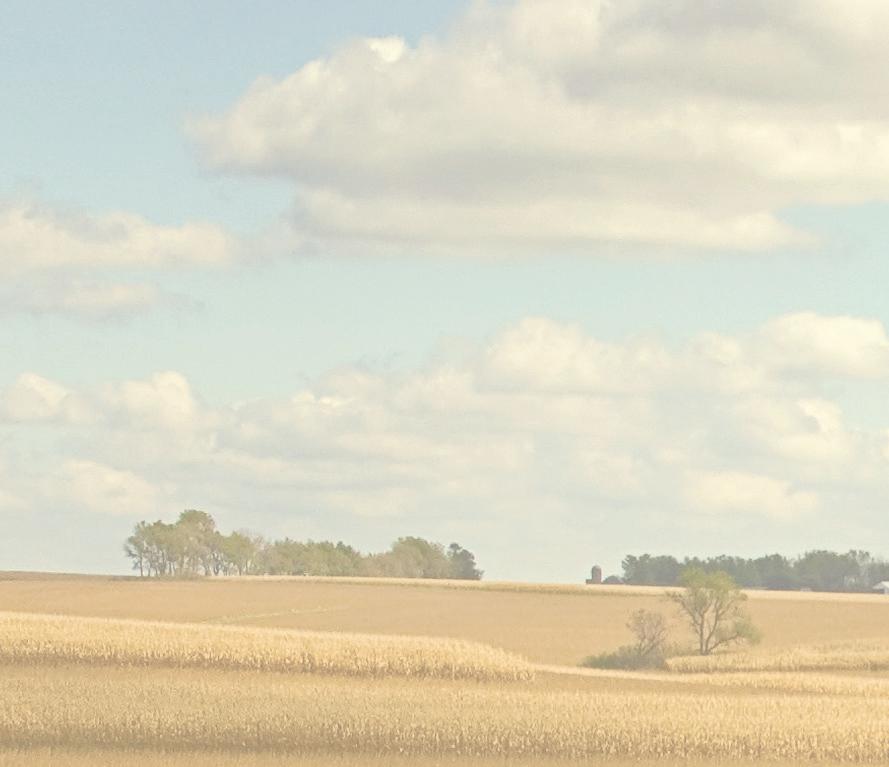


“At the end of the day, if you got a nice machine that you take care of and makes good bales, it doesn’t matter how pretty it looks, it doesn’t matter how new it is; all that mat ters is how good of a product you can pump out the back,” Brown said. “I spent a lot of time adjusting them to make the bales how my customers like them, and when it pumps out a good product, I tend to keep it around.”

Brown bales straight alfalfa, a grass pasture mix with Timothy grass and clover, and a 50-50 grass and alfalfa mix. This year, he added wheat straw to the fold, which is good
for landscaping and animal bedding.
The alfalfa hay “has a lot more sugar, and it’s a lot more higher energy,” Brown said. It’s good for active horses, especially those that get rode on regularly, and also good for cattle who need fattened up. Some horses have certain issues and require the grass hay, which is not so tough and stemmy.
One of the biggest challenges Brown faces in the field is knowing whether the work is going to be done before inclement weather sets in. He has a half-dozen weather ap plications on his phone to follow the forecasts. If any hay does get rained on, that’s enough for the cows to munch on.
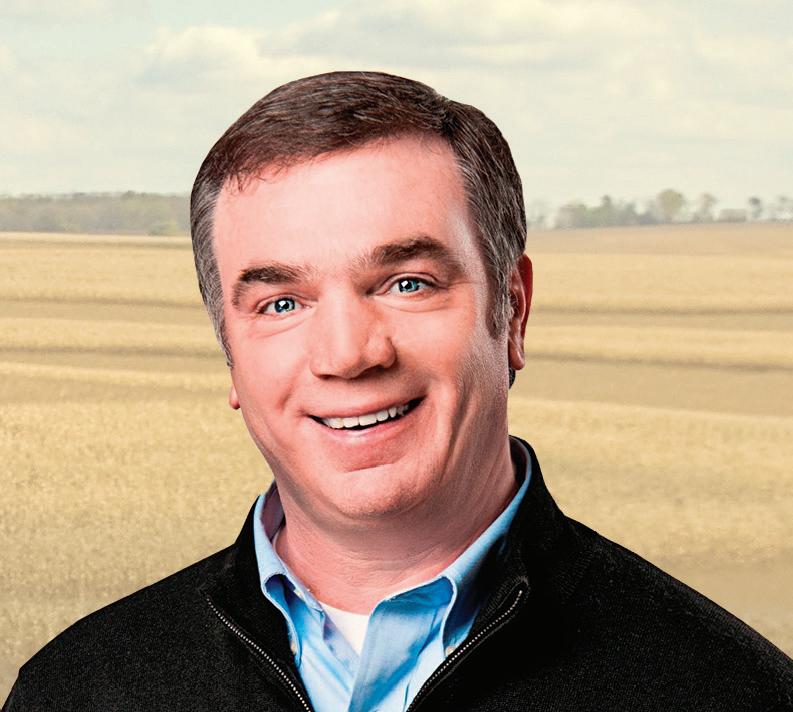
Brown didn’t know a whole lot about horses and their diets until getting to know his customers. Now that he has, he’s established a customer base that keeps him plenty busy, although he sometimes has pockets of time for custom baling. His customers have faith in him, and are excited to know that someone as young as him is finding a future in the ever-complex world of agriculture.
“There’s so many ways to do it,” Brown said. “You learn from everybody. You talk to one guy, and you take a piece of what he has to say, talk to another guy and take a piece of that, put it together and throw some of your own input in on it, and whatever works for you is the way to do it.”
Baling season typically runs from the end of May to the start of October. This year, more word-of-mouth helped him have his best year yet: He churned out about 7,000 bales from nearly 30 acres, and he even had time to do some custom baling. He figures that all of his bales will sell out by the end of November, which is about 2 months ahead of when he ran out last season — and that’s with more bales included in the fold. When the leaves turn colors and the weather gets a little nippier, Brown uses that time to take care of his machines and hauls any re maining hay he has to customers.

When snow hits the ground, Brown can look back on the season with a sense of accomplishment. It’s a feeling that he





strives for after each time out on the field, even when the work pushes him to the limits.
“One of the best parts about it is the feeling of success at the end of the day, and the pride,” Brown said. “I think that’s what a lot of people, especially in my generation, are lacking. There’s a feeling you get that you can’t put into words until you do it. At the end of the day, when you’ve got your hay baled and every thing is up in the barn, and you’re sitting on the porch and it starts raining, it’s so relaxing. There’s a feeling that you accom plished something, and it doesn’t matter what you’re into or what you’re doing. If you don’t have that feeling of accomplish ment, there’s just nothing to it.”
cont’d to page 10
Wayne Wackerlin Memorial Fund (WWMF) was established by his siblings to continue Wayne’s love for agriculture and his entrepreneurial spirit. In October of 2017, Wayne lost his life in a tragic work accident. Not only was Wayne a Plant Manager for a major grain facility, but he also co-owned a firewood business and plowed snow in the winter; he grew up helping his dad on the family farm: baling hay, raising livestock, and growing corn, soybeans, and wheat. At the age of 24, Wayne cash-rented farmland, also growing corn and soybeans. It was his dream to buy land of his own (23 acres of which he had under contract at the time of his death). In 2016, he purchased a new John Deere tractor, having owned several other pieces of machin ery since the age of 11. While Wayne’s time in this life was short, his impact in his 25 1/2 years was tremendous. Wayne’s legacy will live on through the WWMF for years to come. The principal fundraiser for the WWMF is an annual meat raffle. All are encouraged to attend to meet current and past grant awardees and to raise money for future grant recipients. Go to facebook.com/WWMFGrant for more information.















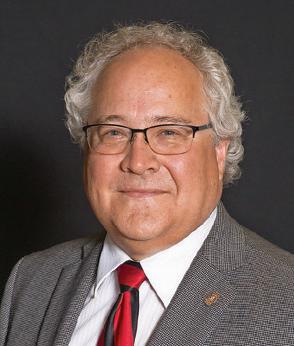

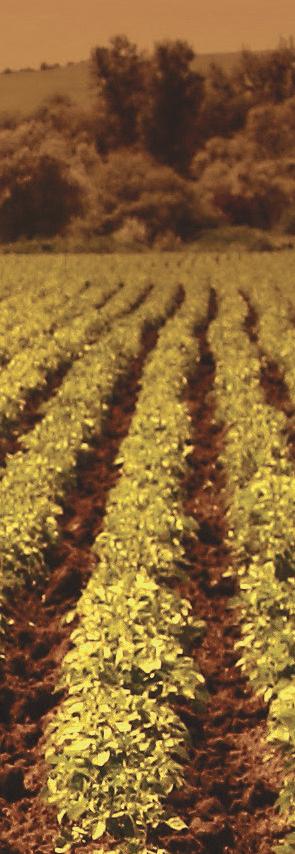

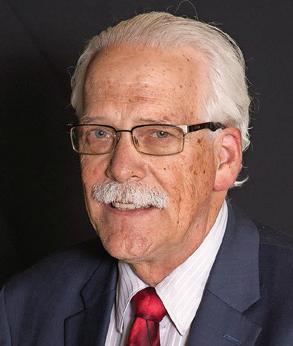
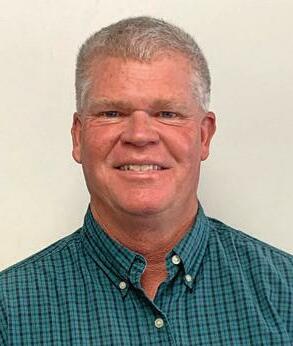

Source: Wayne Wackerlin Memorial Fund press release

For the past 2 years, Brown has received some help for his business through an Ottawa-based agriculture grant pro gram intended to help young farmers. The Wayne Wackerlin Memorial Fund is in its fourth year (more info at left). Brown received $6,000 last year to assist with the purchase of his own baler, make tractor repairs and help with costs of twine, fertilizer and fuel. This year, $a 4,000 grant from the fund will be used to purchase a 16-inch mobile hay conveyor, which will help stack the bales.
“Like Wayne, Connor is generous, and his goal is to build and maintain a successful ag business for years to come, allowing him to mentor and give back to aspiring young agricultural entrepreneurs by remaining connected to his FFA chapter,” fund co-chair Beth Wackerlin said in a press release. “Each applicant truly embodied Wayne’s love for entrepreneurship and love for agriculture.”

Brown became interested in Wayne’s story through his as sociation with the grant, and his story connected with Brown. Wayne, 25, died in 2017 at a grain facility that he managed in Newark. He grew up helping his dad on the family farm: baling hay, raising livestock, and growing corn, soybeans, and wheat. He didn’t slow down during the off-season either: He went on to co-own a firewood business and plowed snow in the winter. Before his death, he owned a few farm vehicles and had rented farmland growing corn and soybeans.
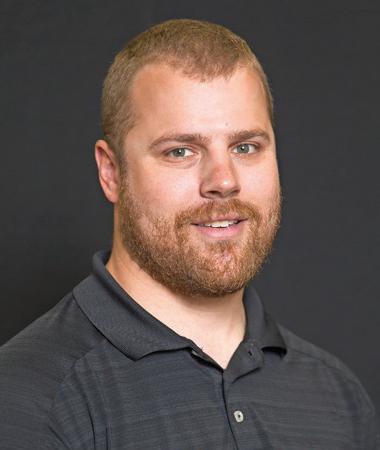
“I never met him, or was close to him, but I read a lot about him,” Brown said. “He was kind of like me. He was young and started to try to farm on his own, was doing a good job at it and was growing, had a great impact on his community and was looked up upon, and an event like that stopped it all.
There’s a lot of up-front cost in farming, Brown said, and there’s a need to find ways to offset that. The Wackerlin grant is one of those avenues. Money is raised from a meat raffle and meet-and-greet fundraiser each November in Ottawa with past and present scholarship recipients.
Brown is glad to see that there are ways to help young farmers get off the ground when it comes to business, and will continue to be a proud supporter of the Wackerlin grant.

“This grant really, really helps people with that,” Brown said. “You never read about young people trying to start businesses, but you go to a place like that and look what their organization is doing, it’s fantastic. It’s really shining a light on people who have true grit and are committed to doing what they love, and it’s helping them out huge. It’s helped me a lot, and I’ve seen how it’s helped a lot of other people.”
Brown wants to make next year more successful than this past one, but he’s also cautious about his growth; he doesn’t want to expand too much, lest he become over whelmed. But he’s got the tools and the support, and there’s no Jo Daviess hill that’s too tough for him to climb.
“I find it real interesting when you sit down at the end of the year and you put ev erything together, you figure out where you’re at and what you want to change for next year,” Brown said. “I’m a people person, and what I really, really enjoy — it’s one of the favorite things I do — is meeting new customers and keeping in touch with them.
“There’s so many great people out there. I’m fortunate enough to have those great people as customers of mine.” n
Find Brown’s Baling and Hay on Facebook, email cdbrown1206@gmail.com or call 815-291-3343 for more information.
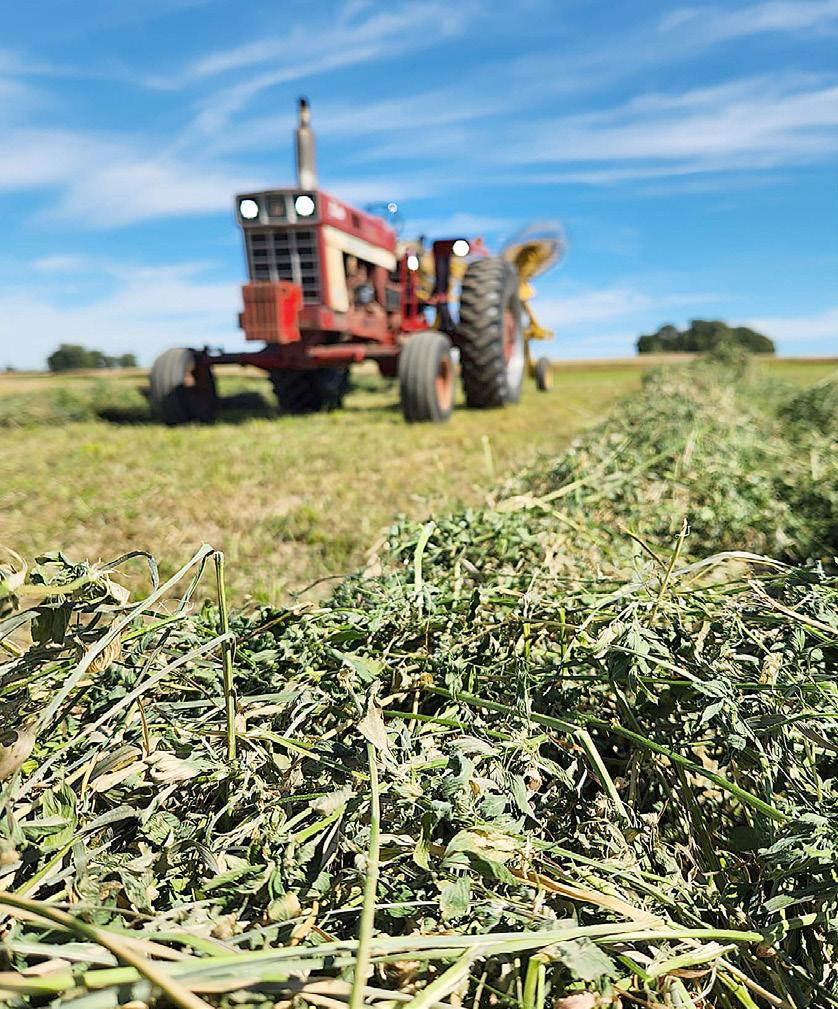
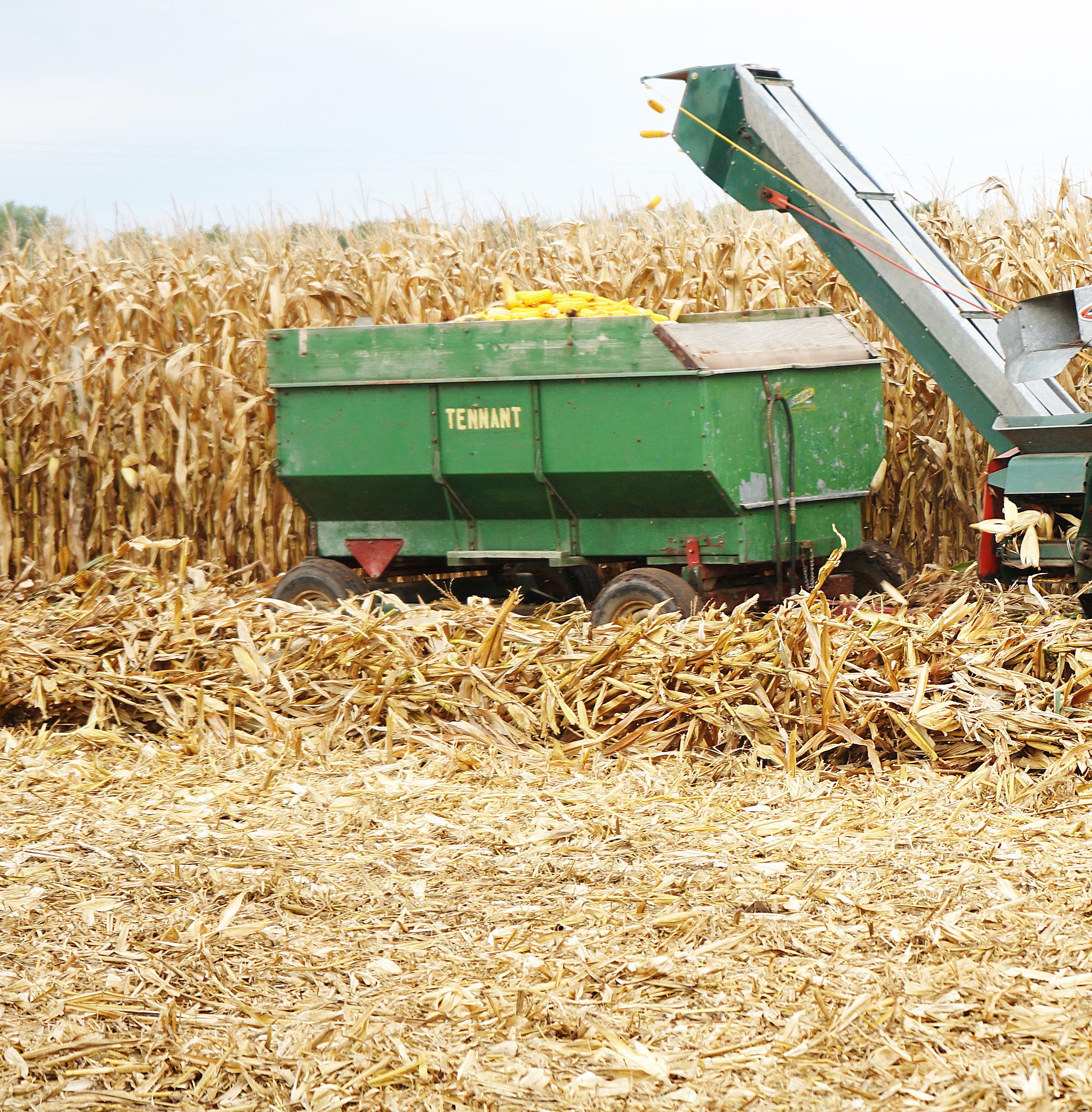








ERIE — Chuck and Kevin Bos have rebuilt and repaired a lot of machines at their shops, and they’ve seen a lot of changes during their decades in business, especially when it comes to ag equipment — computer controls, GPS, high-tech harvesting … there’s not much operators can’t do these days with the push of a button or the flip of a switch.
And while there’s a lot of power at people’s fingertips these days, the Bos broth
ers are big believers in the benefits of elbow grease, too. They’ve got an affinity for a time before microchips came between man and machine and hands held the reins of horsepower, and they’re sharing that fondness for farm history with longtime farmers, new generations of ag profes sionals, and anybody else who’s interested.
The siblings are the bros behind Bos Bros. Historical Farm, where their respect for hard work and history is brought to life at their annual Old Fashioned Fall Harvest Show and Summer Threshing Show.
“It’s great to be out on a tractor and you can hear the implement and the corn stalks crunching,” Chuck said. “Modern farming, you’re in a cab and you can’t hear anything; and you’re probably looking at a camera to see what’s going on behind you. It’s a totally different experience.”

Chuck, who owns Bos Machine Tool Services in Hillsdale, which has been around since 1984, and Kevin, who started Bos Farm Repair in Geneseo in 1999, have brought their passions together for nearly a decade at their annual shows. Chuck owns farm property about 5 miles south of Erie at the southwest corner of Whiteside County where he, his brother, and fellow farm machine en thusiasts bring their antique equipment to the shows, not only to show off their machines, but put them work, too.
This year’s fall harvest show was Sept. 23-25, and included antique tractors, engines, a working saw mill and rock crusher that still get the job done after all these years. On even-numbered years, corn is harvest ed, on odd numbered years it’s wheat’s turn.



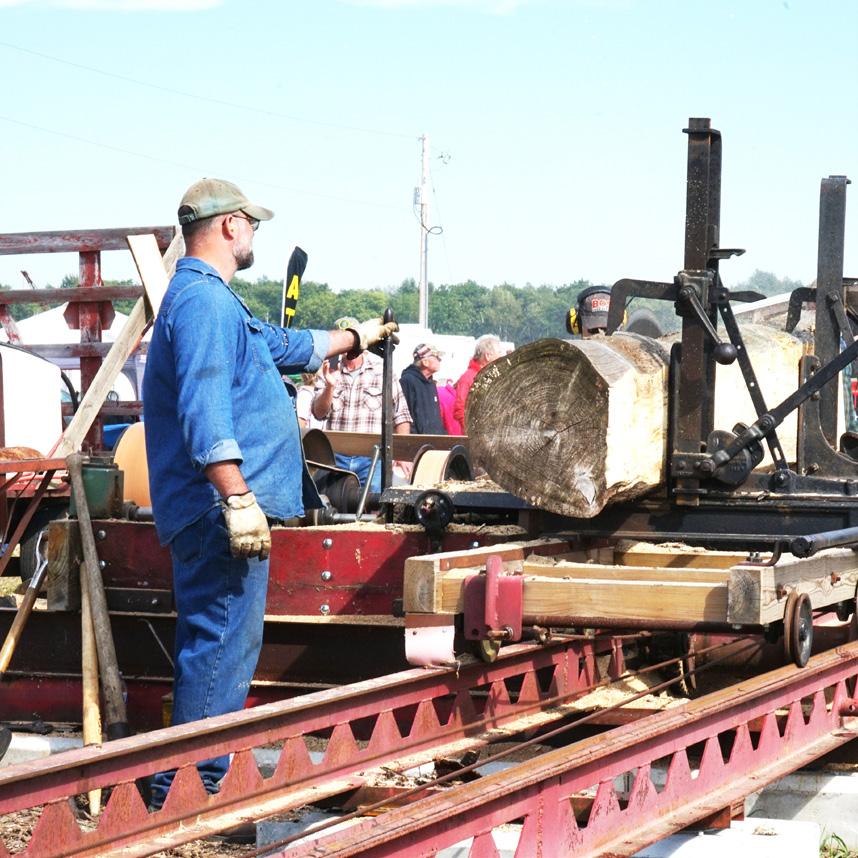
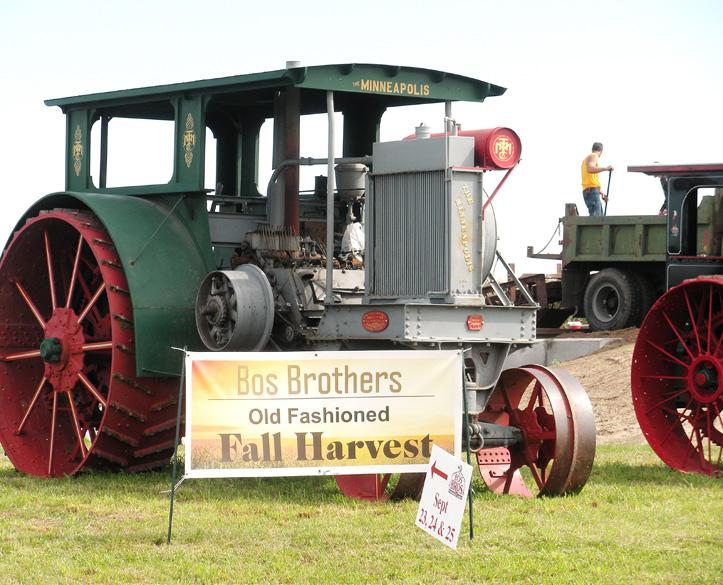
The shows have been popular events on the north west Illinois farm calendar, and even attract people from all over the country.
“Every year, my brother and I both get comments like, ‘I go to a lot of shows and I haven’t seen one with this much stuff operating,’ and nearly always every show, somebody comes along and goes, ‘Wow, I have never seen that particular piece of equipment, and you’re operating it,’” Chuck said.
Take that old rock crusher, for example. “I had a couple of friends at the show for the first time, and both of them commented that they had no idea how that was done, and had never seen that piece of equip ment,” Chuck said, “and certainly never saw it demonstrated before.”




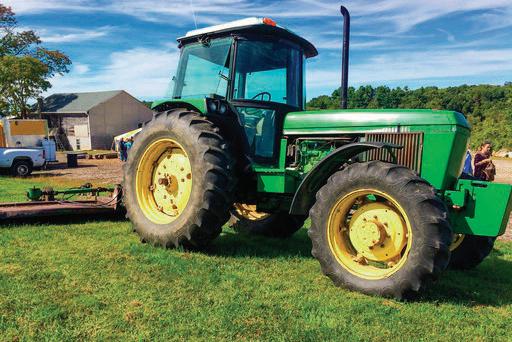




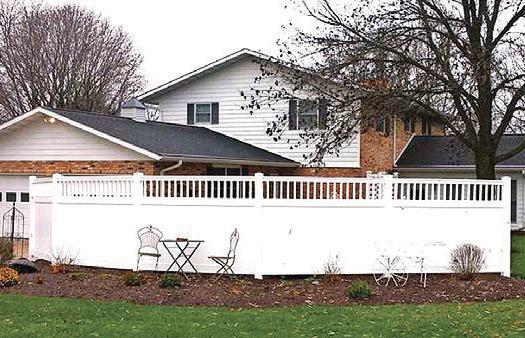
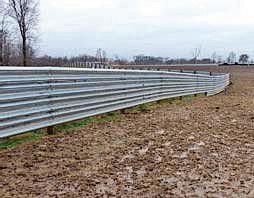


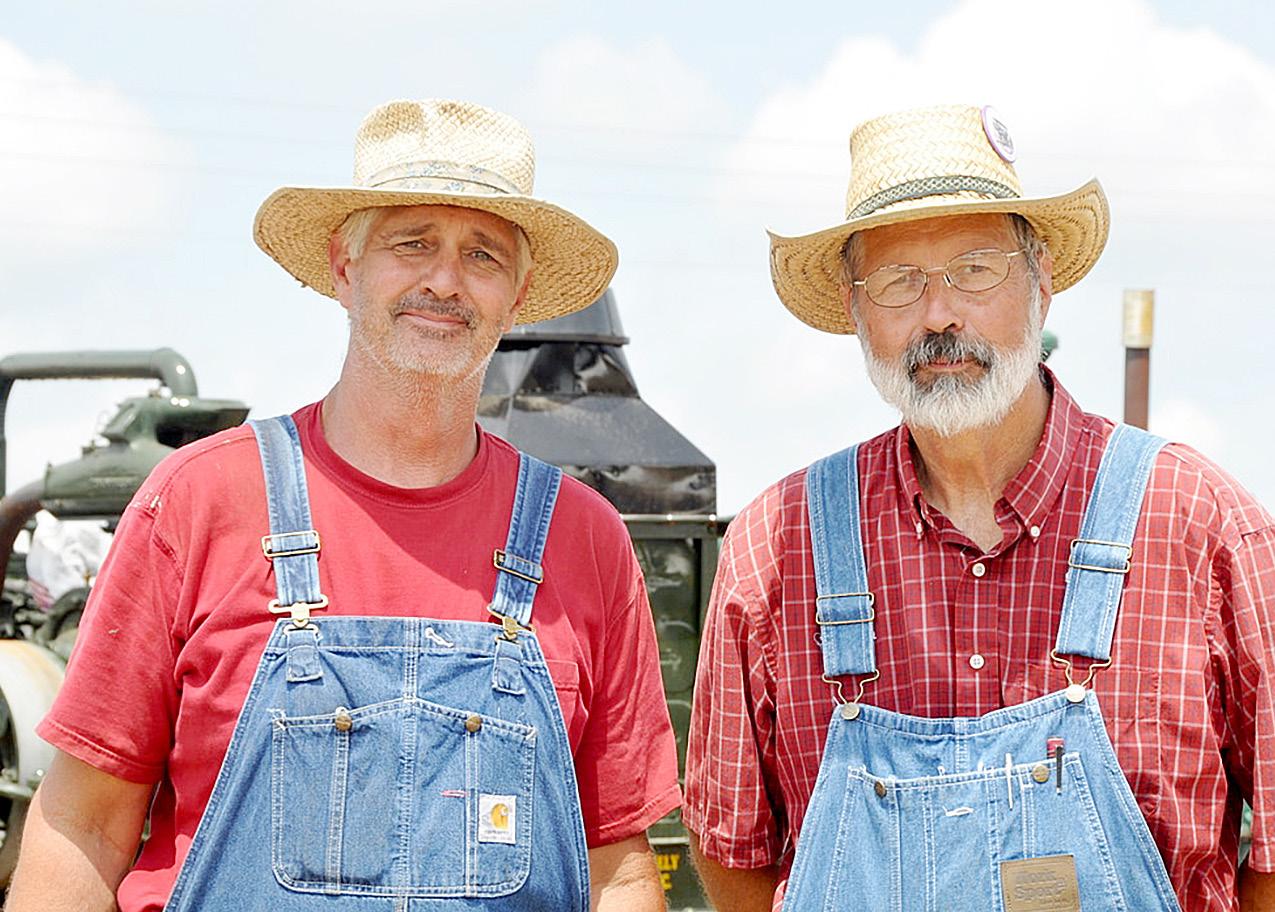
A host of demonstrations are put on during the shows. They include harvesting crops, plowing stalks and stubble, corn shelling, corn meal milling, rock crushing, rug weaving, us ing an old-fashioned saw mill, blacksmithing, woodworking and baking corn bread. Along with the demonstrations, the show also had musical guest Rusty Strings, a bee keeping presentation, a maple sap collection display and a church service on Sunday morning.
There’s also a farm-to-fork aspect to the demonstra tions, as some of the corn harvested gets used for bak ing corn bread in a Cook Shack on wheels. Wheat bread is made in the summer shows.
“No artificial preservatives or any coloring in it,” Chuck said.


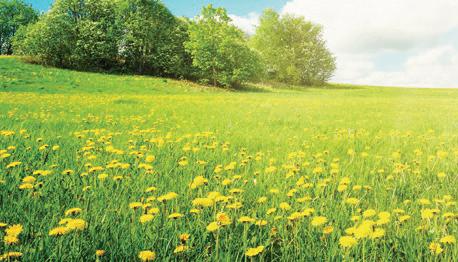






Though the shows put Chuck and Kevin’s name front and center these days, it’s not the first time Bos brothers have been well-known in the local farming community. Dur ing the 1950s and ’60s, Bos brothers Robert, Bill, Charles and Peter were putting down roots, and their name became well known throughout the Whiteside/Henry/Rock Island county area.

Chuck and Kevin are Charles’ sons, and around the time they started their repair businesses, they also started collecting and restoring antique tractors and farm equipment.

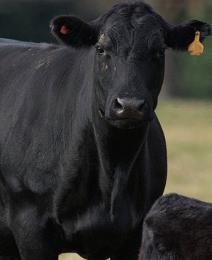

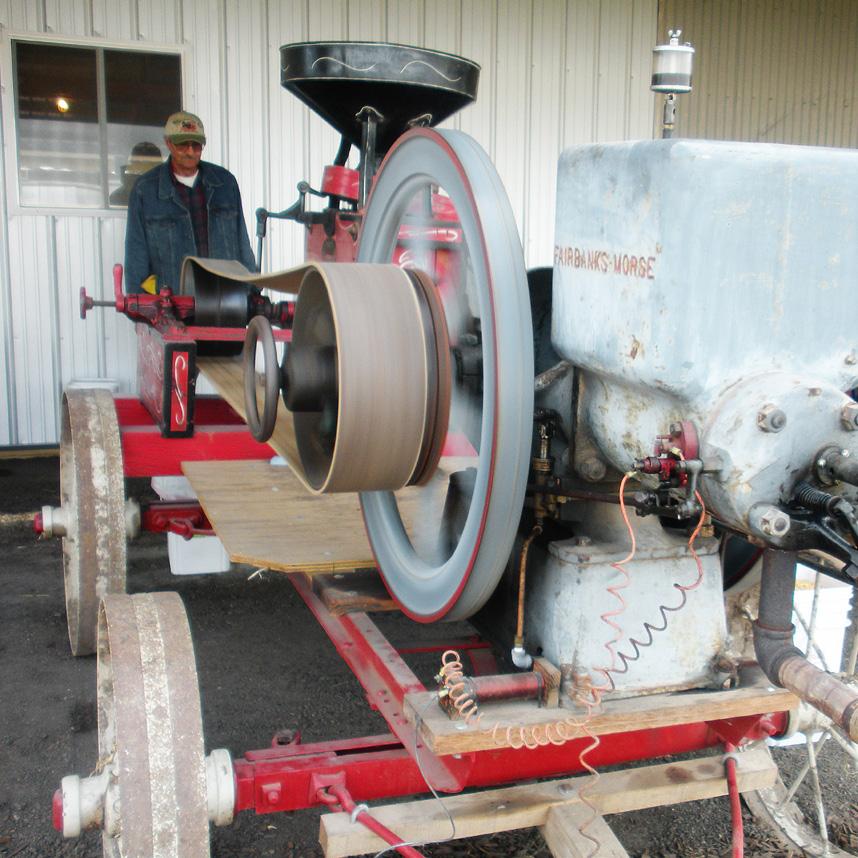
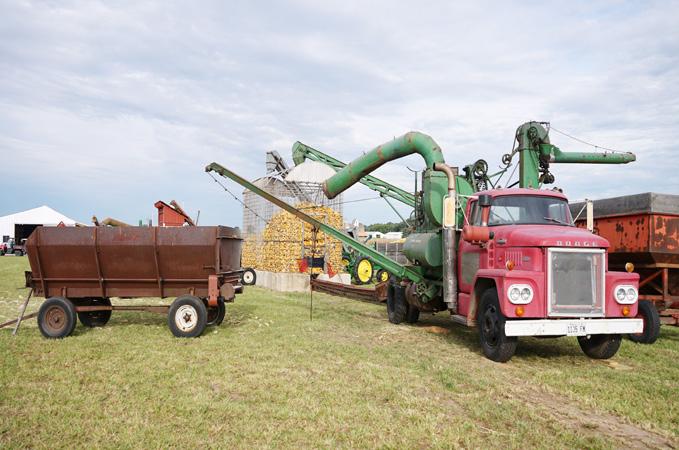

of Gen eseo. Stover Engine Works made farm equipment






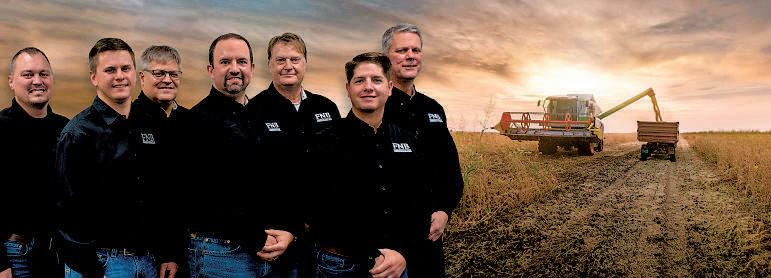


engines in Freeport from 1989 to 1942.”
 PHOTO COURTESY OF BOS BROS. HISTORICAL FARM
PHOTO COURTESY OF BOS BROS. HISTORICAL FARM

PROPHETSTOWN

114 West Third Street (815) 537-2348
GENESEO
700 US Highway 6 East (309) 944-0580
MORRISON 1100 East Lincolnway (815) 772-3700
After participating in regional farm and threshing shows for years, the brothers wanted to venture out on their own with their own philosophy in mind: Celebrating and sharing the his tory of farming using vintage machines and methods. The first show was in 2016 on property in northern Henry County, but it didn’t take long before they moved across county lines. “They were planting wheat, and we would set up over there,” Chuck said. “We tried to buy some of that ground, but were unsuccessful there. Then I wanted to get an Erie address, so we bought ground there. See ing ‘Bos Brothers’ in Erie, Illinois, might trigger some memories in some folks.”

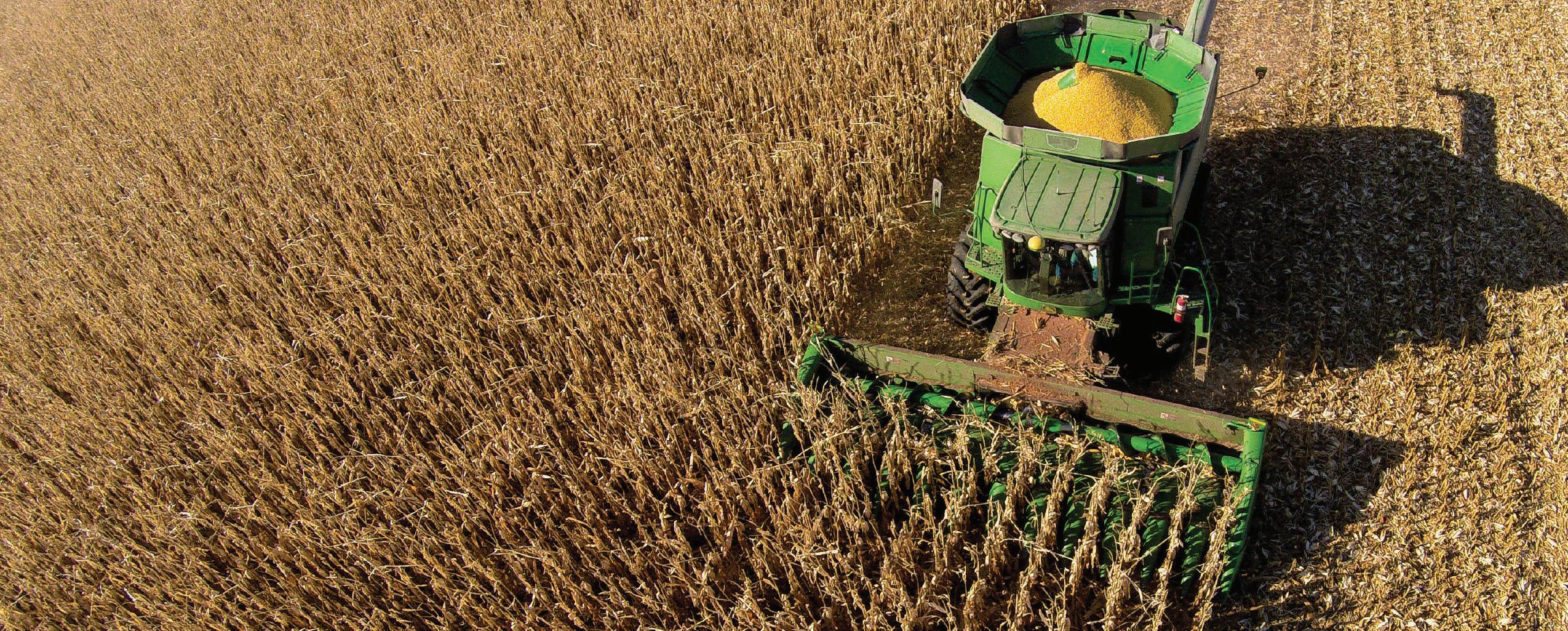
About 90 percent of the equipment at the show — more than 100 machines in all, and counting — be longs to the brothers, others bring in their own classic machines to take part in the demonstrations. Equipment ranges from the 1900s to the 1970s.

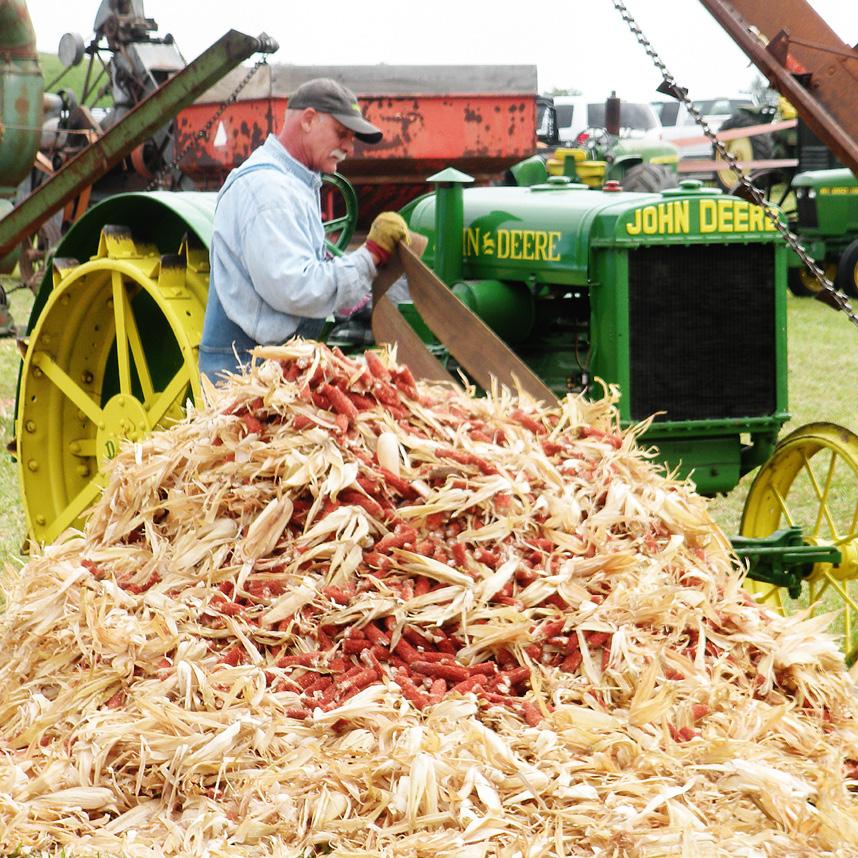

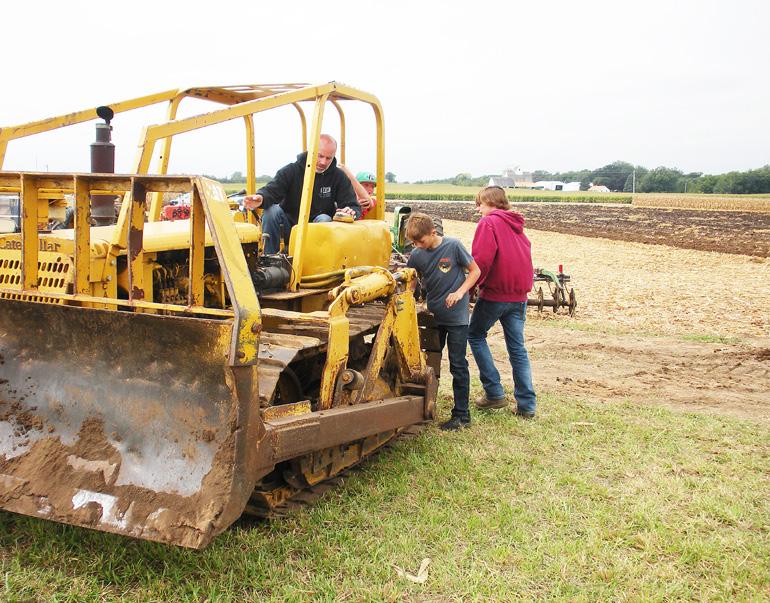
Robert Beaver of Marion, Iowa, spent 17 years in the antique tractor repair business. The founder of Robert’s Carburetor Re pair in Marion, just outside of Cedar Rapids, grew his business into one that became known throughout the world for antique tractor repair, and he continues to operate a 1936 John Deere A among his own fleet.
Not often does Beaver come upon a farm machine show where actual work is being done.

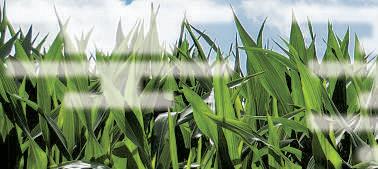
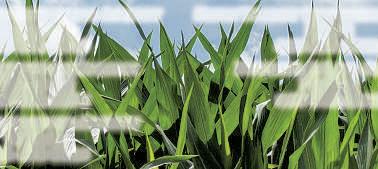



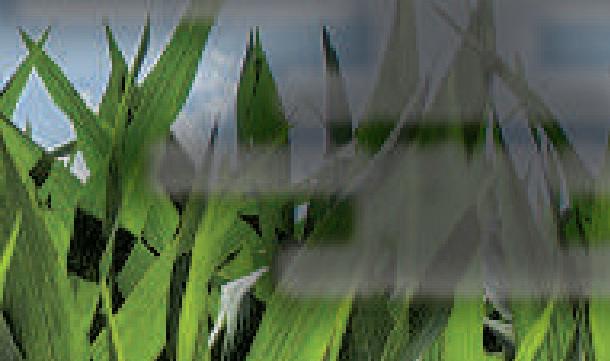



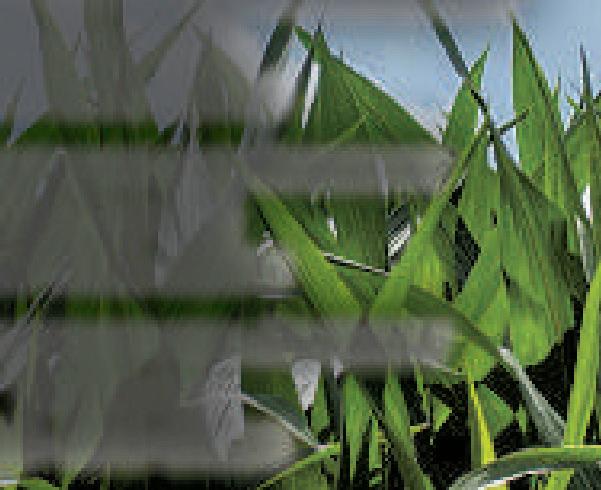






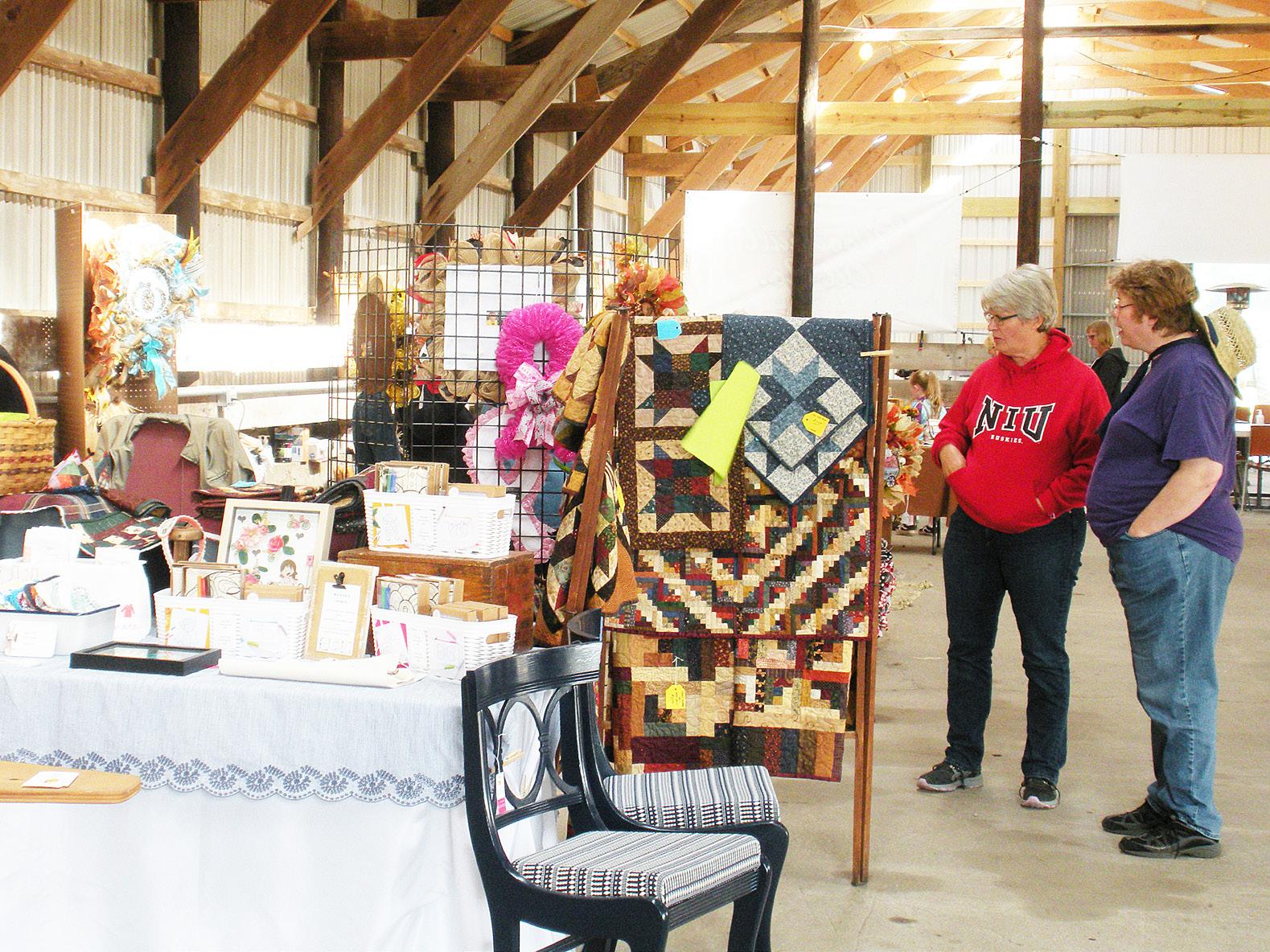
“There’s a lot of shows that you go to and see tractor parades, or they sit there, or they drive around,” Beaver said. “My friend and I have been to a lot of shows over the last 25 to 30 years, and the thing about this one is people can come and see stuff being done with the old stuff. That really makes a big differ ence. This show is one of the better ones to come to that you can actually see everything working.”
While the Bos Brothers are roaming around the grounds swapping stories, sharing their knowledge, seeing familiar faces and meeting new ones, Chuck’s daughter, Katie Lewis, coordinates events inside a shed that includes vendors selling items ranging from rugs to maple syrup to motor oil, concession stands — in cluding a cookout from the Geneseo High School FFA program — as well as the music and church service. Lewis and her father and uncle also get a helping hand from a dedicated group of volunteers who help keep the show’s motor running.


People come from all over — from Nebraska, Texas, Min nesota, Wisconsin, Michigan, and even a dedicated group of followers from the Amish community in Nappanee, Indiana, converge to see these rugged and reliable machines in action and reminisce about days when food didn’t travel far from the farm before ending up on the table.


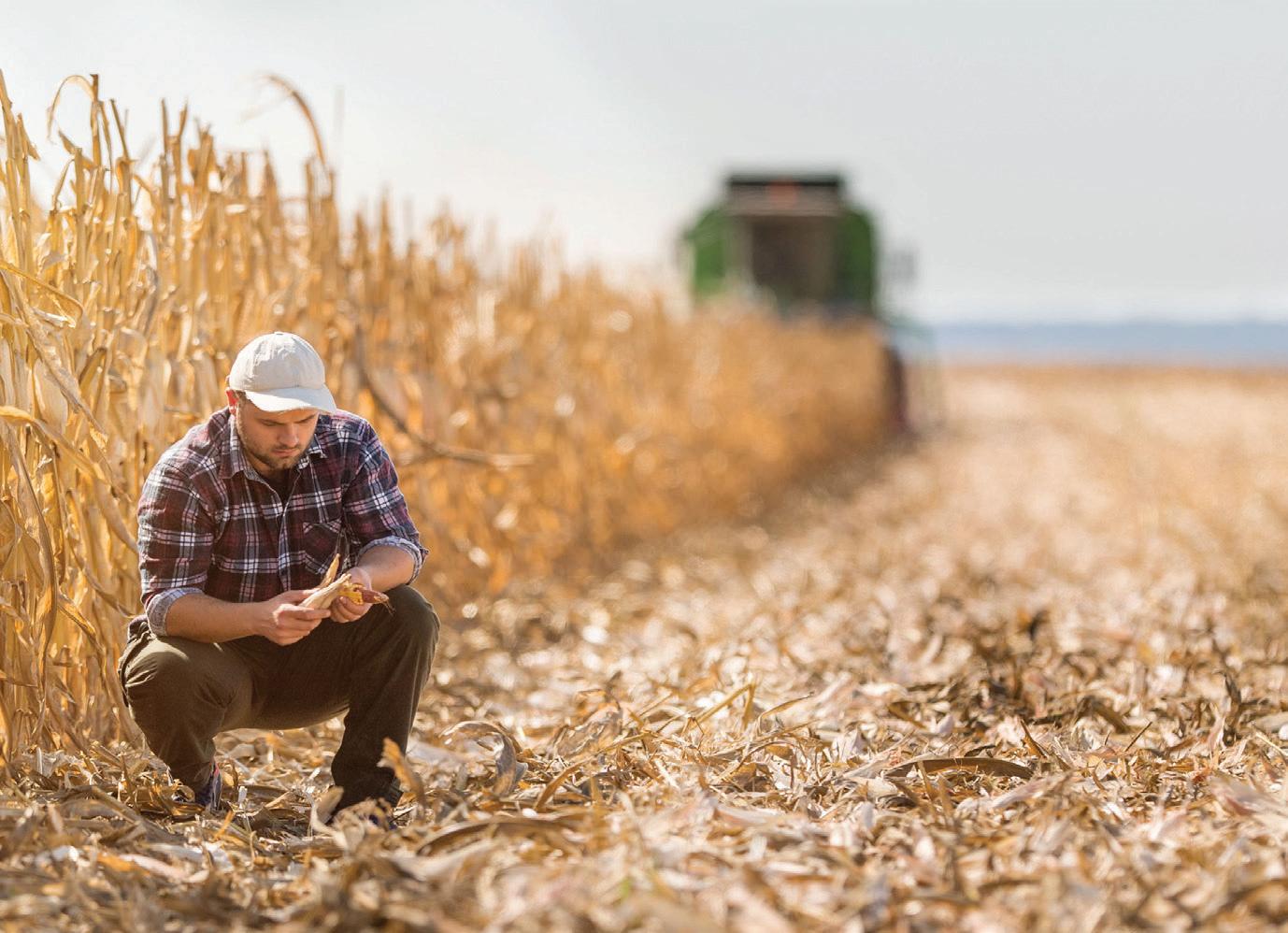

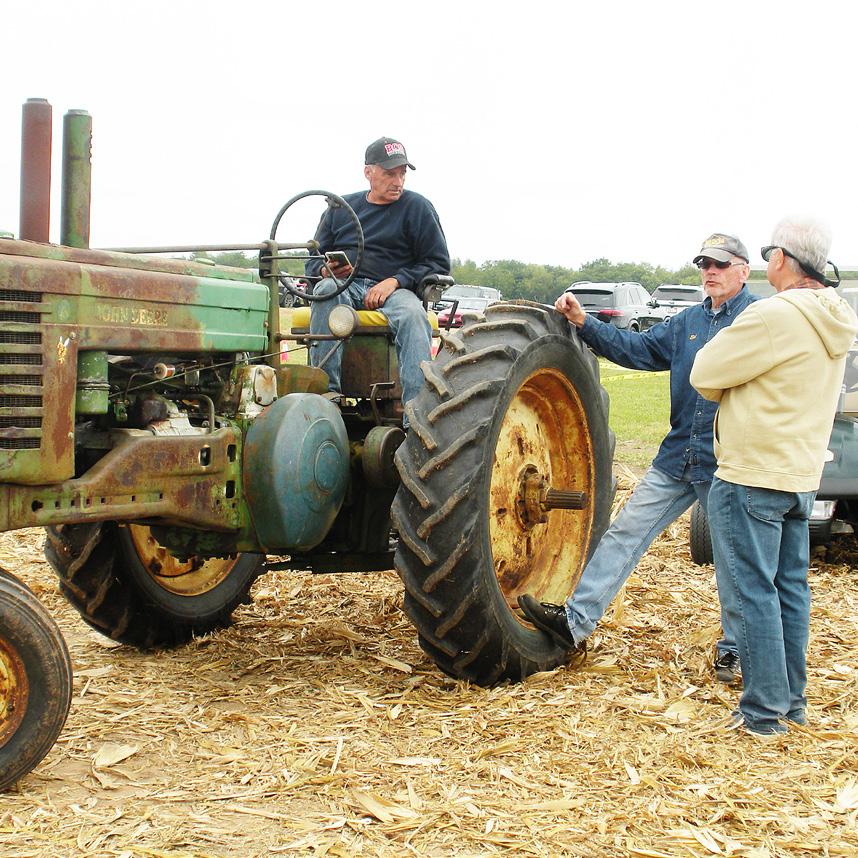
“I enjoy visiting with the people,” Lewis said. “It’s different people than you meet on the streets. They’re like-minded and enjoy the simpler things in life. They have common interests, and they enjoy visiting with others and shar ing these skills and crafts that you don’t see very much anymore. It gives you an appreciation for how blessed we are that we can go to Walmart and buy everything we need. But they didn’t have that capacity. They had to work to get what they needed.”
As the show grows, the brothers continue to come up with ways to make it even better. They’d like to build up the show grounds to include outbuildings and livestock, and a place to store their equipment.










“We envision moving some buildings there and actually developing a farmstead,” Chuck said. “I have some chickens in a chicken house, some pigs and some cows. Farming in the old days, everyone had live stock. Nowadays, at least around here, there’s not a whole lot of livestock left.”
The show isn’t just for farmers — the whole family can enjoy it. Kids can ride on some of the machines and even have a hand in helping out with a display, but many are simply fascinated by machines that aren’t high-tech, but still get the job done.
“I like opening the eyes in people and seeing the reactions they have,” Chuck said. “It’ll help them to understand how important farming is.” n

HatchEstatesrecentlyreceivedits sesquicentennialstatusfromthe IllinoisDepartmentofAgriculture. Palmer(left)andDaltonGrossmann(right) arepartownersofthefarmthat’sbeenin thefamilysince1845,andDalton’sson,Lucas, enjoyscomingouttovisitwhenhecan.

SUBLETTE — Sometimes, the word constant can be a contradiction. Talk about constant change, and it’s something that’s always hap pening and never-ending. But talk about con stants in life? They never change. Take the land west of Sublette. It’s seen its fair share of changes in the past 177 years, but one thing hasn’t changed: It’s been part of the Hatch family the whole time. Today, Amy Palmer, 68, of Sublette represents the fifth generation of her fam ily to oversee the family farm, Hatch Estates LLC, that her great-great-grandfather, Sherman Loiell Hatch, started in 1845. Palmer and her family submitted paper work to the Illinois Department of Agriculture’s Centen nial, Sesquicentennial and Bicentennial Farm program to be recognized as a sesquicentennial farm, and it was approved last year.
By Cody Cutter Sauk Valley Media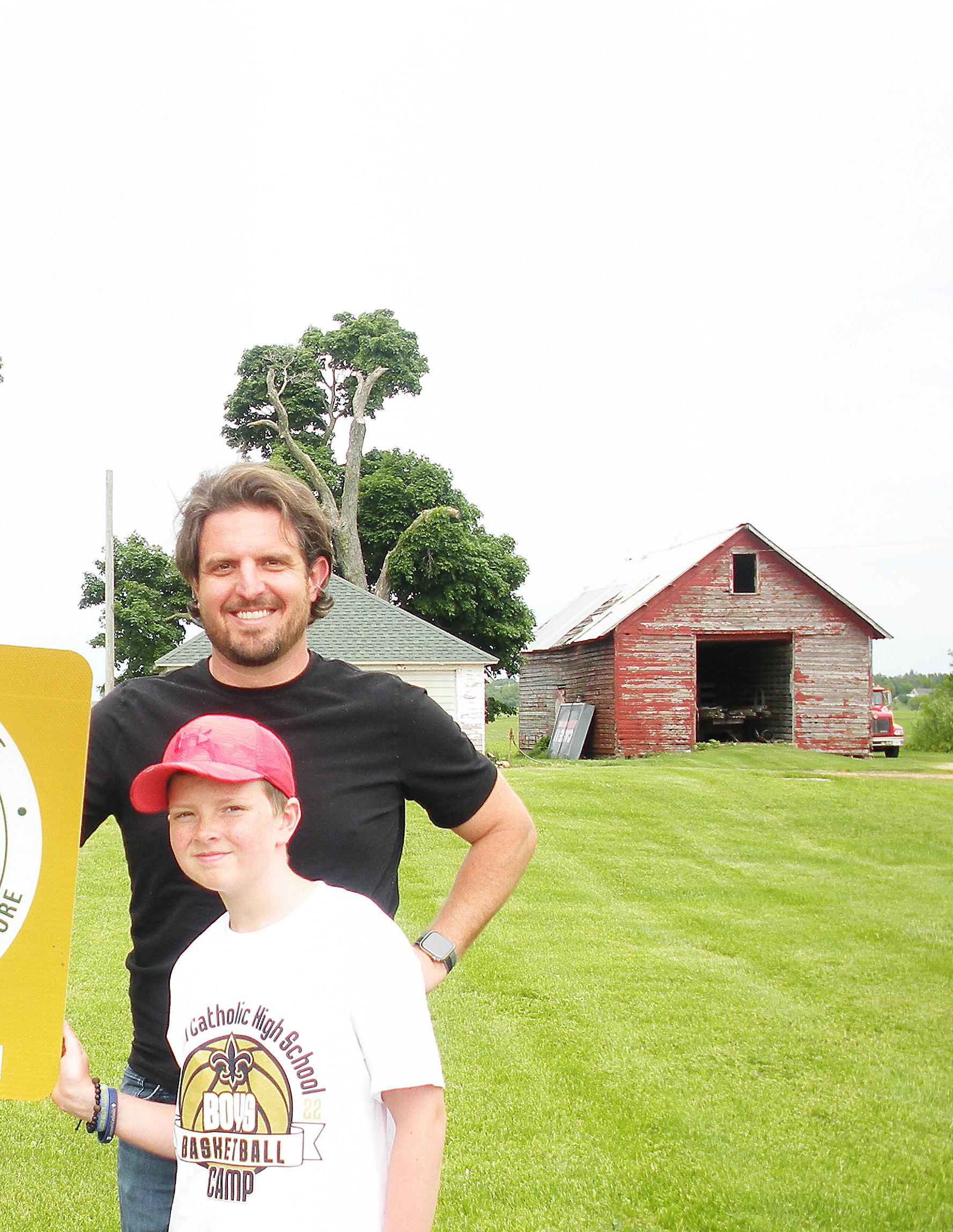
Even though the true sesquicentennial hap pened in 1995, the recognition is better late than never, and it gives the family a point of pride, both now and in the future.
After nearly 50 years living in Florida, Palmer moved back near the family farm in 2021 to rees tablish the family’s place in the farm’s long history.
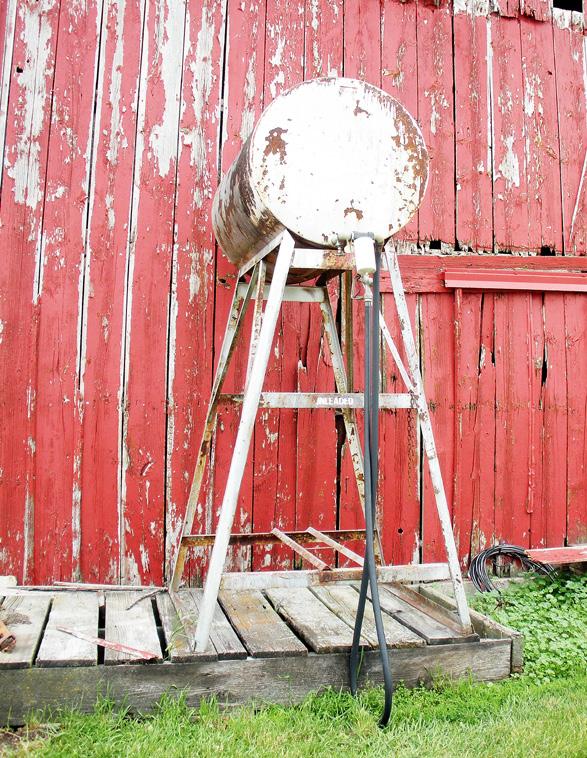




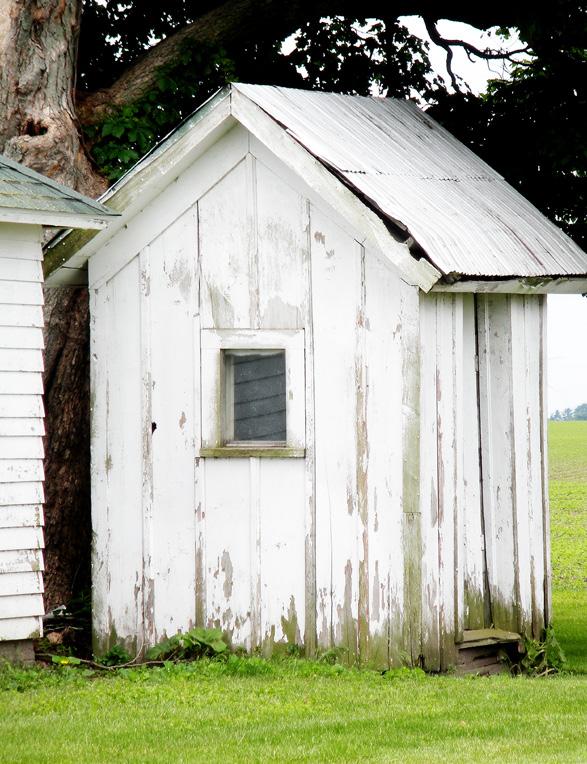
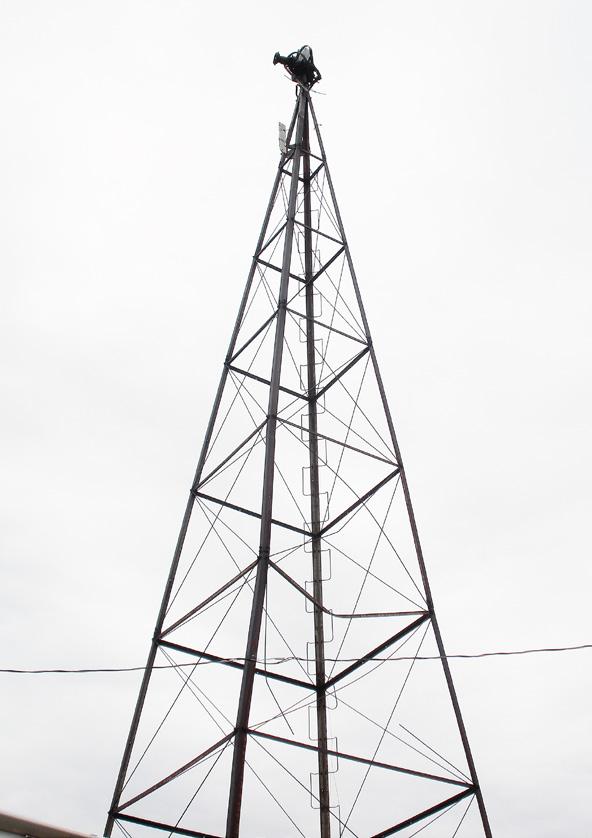

“It’s one of those things, as a young person in a rural community, you almost need to leave in or der to be able to afford to come back,” Palmer said. “It was time to reestablish this as a place where everyone can return to.”
Ownership of the farm is divided among a few living adult descendants of the family: Palmer owns one-third, her nephew, Dalton Grossmann, 38, of Bloomington owns another one-third, and a group of Amy’s cousins in California controls
the remaining one-third. Dalton’s son, Lucas, 11, enjoys making the trips up to see Grandma and wander around the farm whenever he can.
“It’s been a great few years getting reestablished with the farm,” Grossmann said. “It’s been great to have a place to go and bring my kids out to some where that is ours.”
For the most part, the family members are hands-off farm owners. The hands-on work has been done by the Dinges family for more than 40 years. Amy’s grandfather, Charlie, was the last fam ily member to work on the farm, and he did it all the way to age 92 — stopping only when he broke his ankle on some rotting wood in the barn. Leslie “Leddie” Dinges was the first of his family to work with Charlie in the 1940s, followed by his sons, Delmar and Tom Dinges, and Tom’s son, Dean.
HATCH cont’d to page 25
Below: Dalton and Lucas explore the family farm earlier this year. “It’s been a great few years getting reestablished with the farm,” Dalton said. “It’s been great to have a place to go and bring my kids out to somewhere that is ours.”
Corn and soybeans have been the mainstays of the









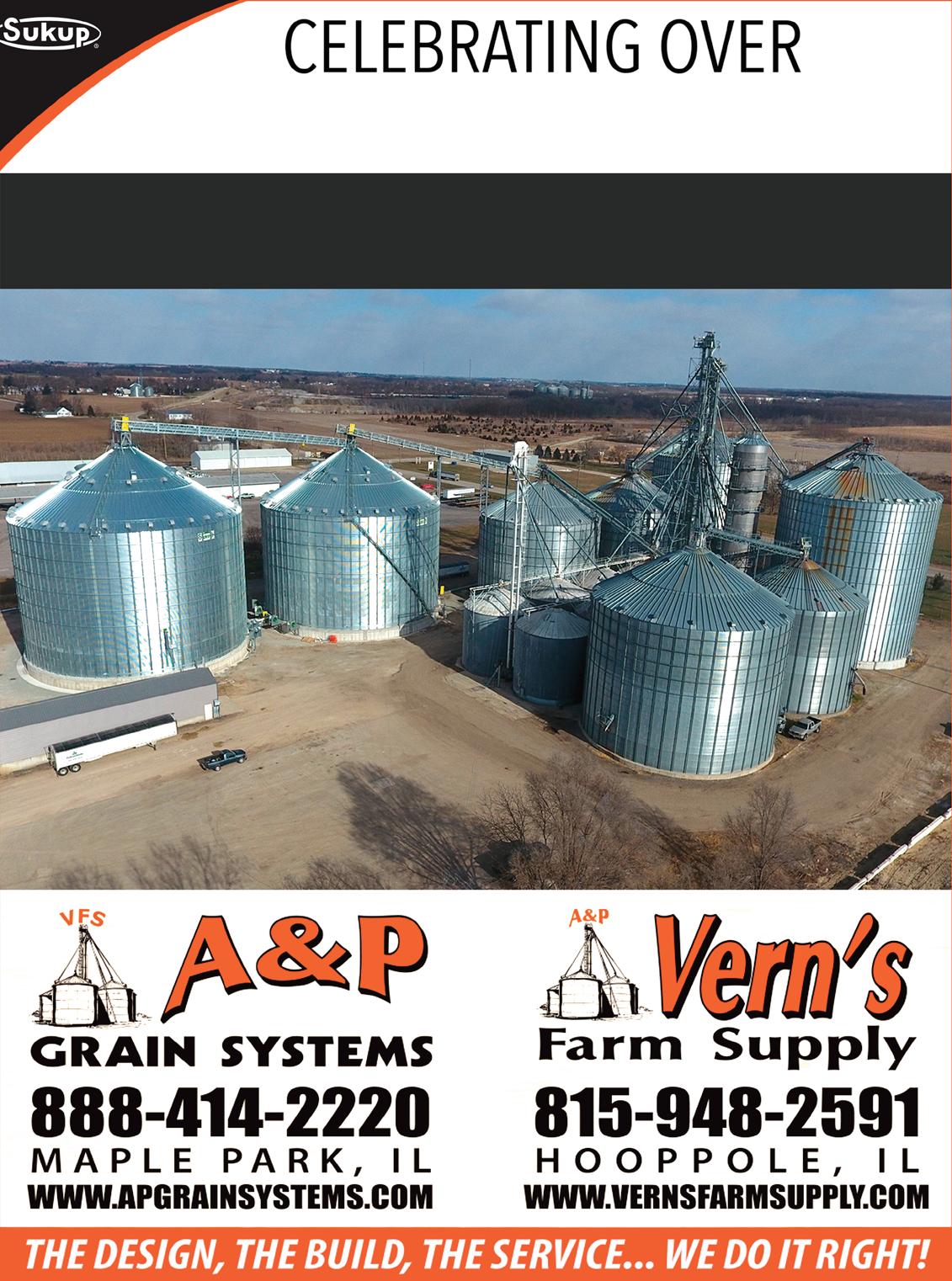
though cattle and hogs were raised there until the 1980s. Dalton has recently taken an interest in being involved more with the farm operation, and has worked with the youngest members of the Dinges family to keep the farm going, working on more sustainable farm practices and maintaining profitability. He also has enjoyed research ing his family history to learn stories of life the farm from generations past.
“The families have kind of been intertwined ever since then,” Grossmann said. “My great-grandpa was in charge of everything, and when the generations changed, it got to the point where it was just my grandma, my aunt and my mom [Heidi Palmer]. There was no real patriarch to run the farm, and we handed it off to the Dinges family, and they’ve man aged everything and carried it through to this point.”
cont’d to page 26

Any kid who grew up on a farm likely has fond memories of exploring the family farmstead, climbing ladders to lofts above, getting dirty and dusty but having a ball, and enjoying life in the country. Lucas is no different. He said he likes “running around and doing stuff. I think it’s pretty cool being out in the open at the farm.”
CODY CUTTER/CCUTTER@SAUKVALLEY.COM

Lucas is one of Dalton’s five children; among the rest are his brother, Henry, whose middle name is Hatch. When he comes out to visit the farm with his siblings, Lucas enjoys life in the country, as opposed to the urban setting of Bloomington, and “running around and doing stuff,” he said. His father will often tell him stories of the farm in hopes that one day he’ll visit more often and be in charge of it when he gets older.
“I think it’s pretty cool being out in the open at the farm,” Lucas said. “There are creeks and stuff, and you can find a bunch of cool stuff around. You can find things from a really long time ago, if you really dig.”
Sherman Hatch was born in 1807 in Cav endish, Vermont. His arrival in Lee County actually took place before the start of his farm. When he came in 1837, he staked his claim on the land his family owns today but that claim was jumped in 1838 while Sherman was away, and it took another 7 years to get his land back. After reclaim ing the land, Sherman had 80 acres to work with, where he built a two-story brick house in 1852 to live in. The house eventually came down in 2005.
farm’s beginning, and if the Hatches hold on to it for another 23 years, bicentennial status will be recognized.
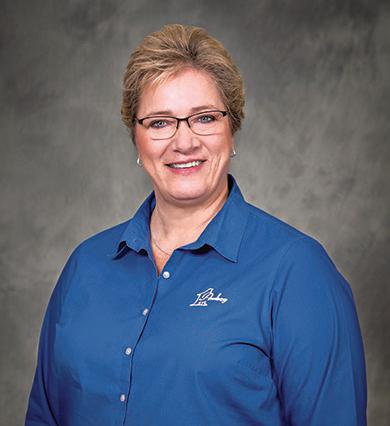

And if anyone needs physical proof of its 1845 origins, the Palmers can dig out the original sheepskin paper deeds with President James K. Polk’s name on it.
“He came here and liked it so much that he went back to get his wife,” Grossmann said, but when he returned he had to buy it back. “He went to a claim jumping tribunal and was able to buy it back for $150, after he had settled it the first time. It’s such an interesting history to think about how much things have changed since then.”
This old sign at the Hatch farm let people know the kind of equipment the owners used.
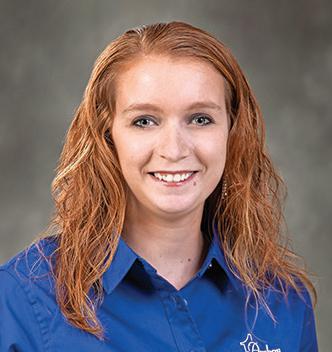
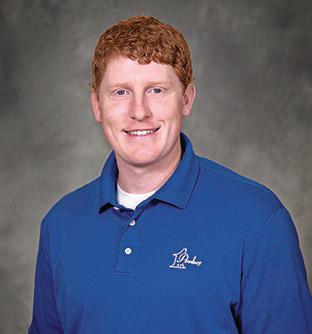






 CODY CUTTER/CCUTTER@SAUKVALLEY.COM
CODY CUTTER/CCUTTER@SAUKVALLEY.COM
Sherman passed the farm down to his son, Charles L. Hatch, who then handed it down to Charles “Charlie” B. Hatch. It was under Charlie’s ownership that the Dinges family started to work on the farm. Amy’s mother, Harriet Hatch Palmer, took control of the land after Charlie’s death.
Helping others around the area had been a point of pride for Charlie, especially when the nation and Lee County were hit hard by the Great Depression. Like many farmers, the Hatches had hogs and cattle, but unlike the rest of them, they still had a truck, when many others had sold theirs.
Illinois Department of Agriculture recognizes 1845 as the
“Grandpa was one of the few people around who had a truck during the Great Depression,” Palmer said. “He would haul livestock into the Chicago Stock Yards, and that was bringing back income to the farmer who had the cattle. He was the middle man.”

Other interesting stories that Amy heard over the years involved the people who roamed the land for hundreds of years before her own family did: the Native Americans. The most prominent regional tribe, the Sauk under Chief Black Hawk, had left the land by 1832, but there were some that remained around Lee County for a couple of more decades afterward.

would plop their children there, and say. ‘Don’t move.’ She would walk into the village, do whatever she needed to do, and come back and get the kids. Back at the cabins, the natives would peek into the windows to see what was going on. It was a gentle interaction.”

Charles L. Hatch and his wife, Cath erine, the second generation of the Hatch family to settle on the farm
The Hatches have found many arrowheads, toma hawks and other items on the property.
“I used to have a lot of Native American stories, things that their grandparents had told them when they were settling here,” Palmer said. “[Near the farm] the grass can grow quite tall, and there used to be snake pit. They would talk about how one of the women
Palmer and Grossmann want to make sure their family’s link to history remains in the family. Grossmann grew up living in Dixon, and didn’t get to spend a whole lot of time at the farm. However, as he started reading through old newspaper articles and other documents when his aunt moved back, it gave him a newfound appreciation for the family farm lifestyle. It’s some thing that he wants his children to be a part of, and he hopes that will carry on for generations.
Grossmann has even entertained the thought of making the farm his retirement spot.
“You find all of these beautiful articles that were written in the paper back then about the whole history of it and want to make sure that this generation [point ing to Lucas] and the next generation has an opportu nity to make the farm stay in the family,” Grossmann said. n


Go to tinyurl. com/5n8dx54s to learn more about the Illinois Depart ment of Agricul ture’s Centennial, Sesquicentennial and Bicentennial Farm program, find recognized farms throughout the state, and ap ply for admission for anniversary status.
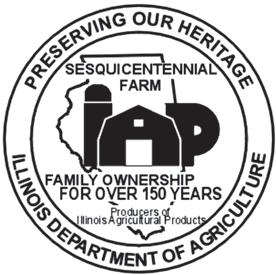

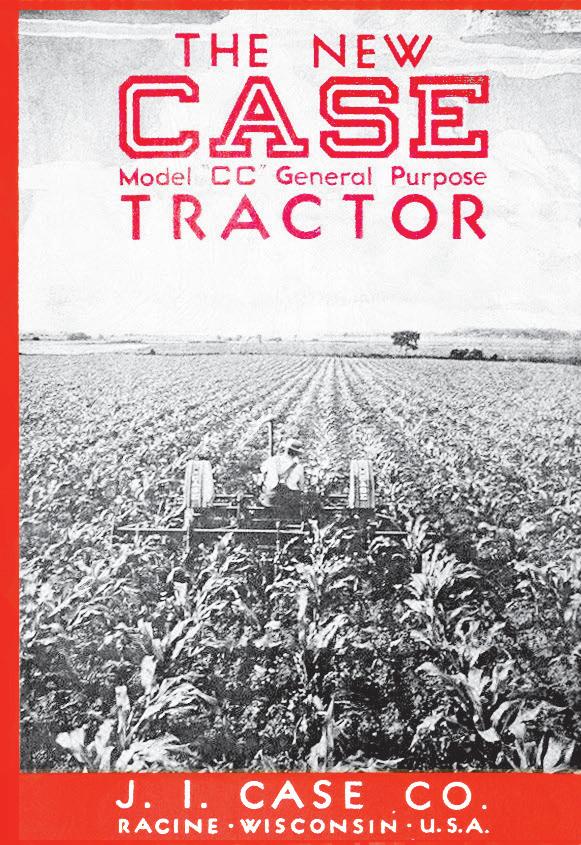
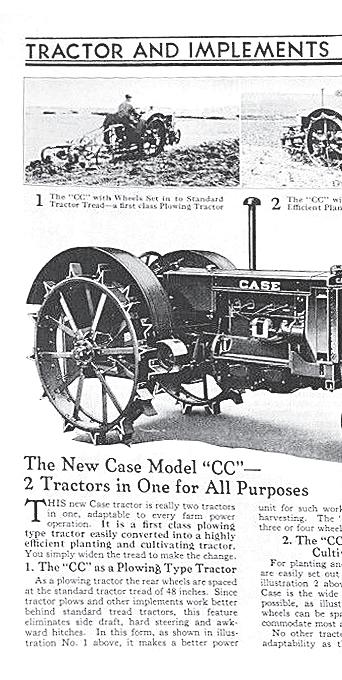
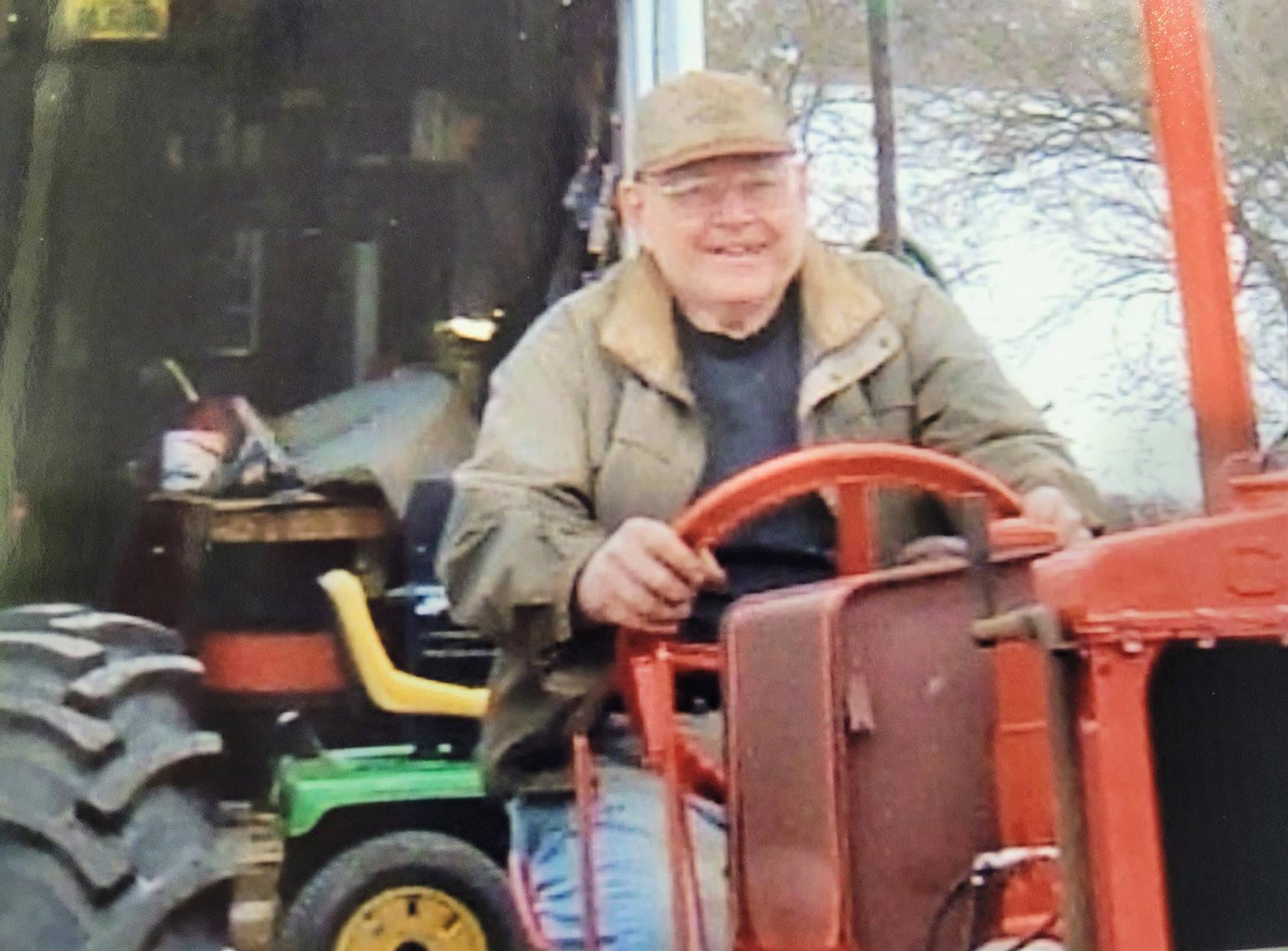
“He came out and the tractor was sitting in a pile of weeds. He said, ‘Is there any way I could get one more ride?’” Linker recalls, with a catch in his voice.











“That’s what started the whole thing.”
The tractor in question is Linker’s orange 1935 Case CC. The man who wanted one more ride? His dad, Jerry Linker — and that tractor had a special connection to Jerry. It used to belong to his father, Bill.


Steele’s sister, Marion Lines, and her husband, Harold, had not only purchased the tractor, but also had found the original bill of sale with Bill’s name on it.
He asked Steve if he wanted the tractor back, and Steve said yes.
“The tractor was back in the family,” Steve said.
Although the tractor was back with Steve and his dad, it was in bad shape. So, when Jerry, who was in failing health by then, asked for one more ride, Steve knew what he had to do: “I said, ‘All we can do is try, Dad.’”
A look at well-oiled farm machines and the people whose elbow grease keeps ‘em going
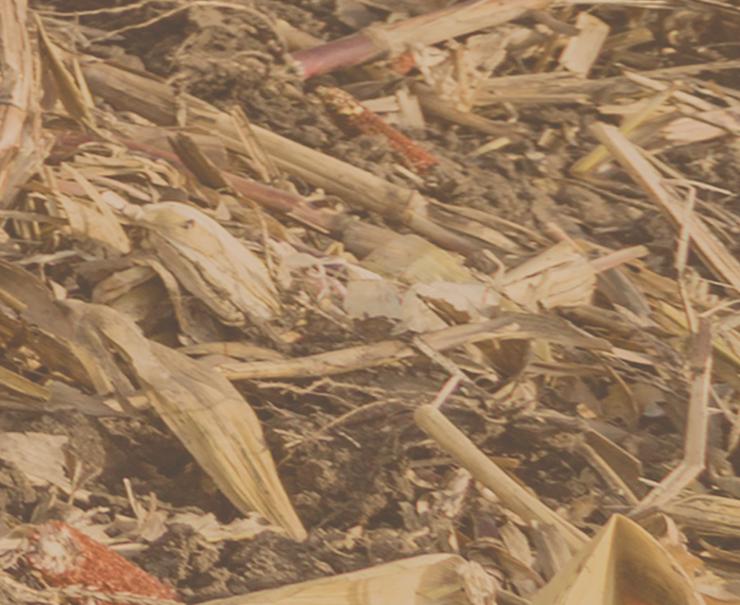
Bill bought the tractor new in 1935. Eventually, it was sold at auction when Bill retired, and the family lost track of it — or, at least Steve and his dad thought they had.
Harold Steele, a Bureau County resi dent and another collector well-known among locals, called Steve to ask if Bill had ever owned a 1935 Case CC. Steve said his grandpa had indeed.
Then Steele surprised Steve by telling him that
And try they did — and they succeeded, but it took time and took work, but it was worth it.
“We destroyed another tractor to make it happen, but we did it,” Steve said. “He got his ride. That picture is of his first ride, up the driveway. Seeing him that happy and seeing that smile, that is priceless to me,” Steve said.
Restoring the Case took four years, and Jerry made his trip up the driveway in it in 2014. He passed away in February 2018.
MALDEN, Ill. — Many factors have played into Steve Linker’s passion for collecting and restoring vintage tractors. But one moment in 2014, captured in a photo, will always be front and center.LINKER cont’d to page 30
The work on the Case was a tribute to the person Steve cred its with teaching him about vintage tractors and restoring them.
“It’s something my dad taught me. My grandpa collected and restored them, but my dad taught me more or less everything I know,” he said.


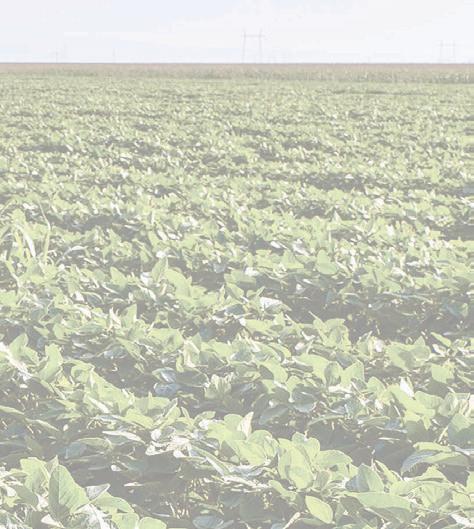

The 1935 Case CC is one of four tractors — out of Linker’s collection of approximately 20 — that Steve and his mom, Joyce Linker, take around to shows, parades and other events, from Ohio to Franklin Grove to Sycamore and beyond.





Each of the tractors has its own story, and for one — the largest of the four, a 1928 Rumely Oil Pull 40-60 Z — the final chapter was nearly written a few years ago.
Steve’s shop is at his parents’ home in Malden. On April 7, 2019, he left to go to an appointment in Princeton. Joyce was gone for the day visiting friends in Rockford when a fire broke out.



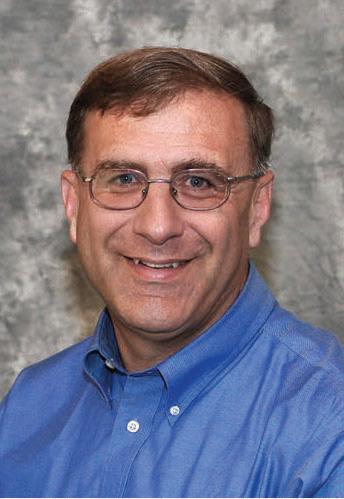
A few days prior, Malden Fire Chief Travis Rossler and Mal den Fire Department firefighter Jerry Jackson, friends of the family, stopped by the shop to get some parts from Steve.
“Rossler had to walk around the Oil Pull, so he knew where it was sitting,” Steve said.
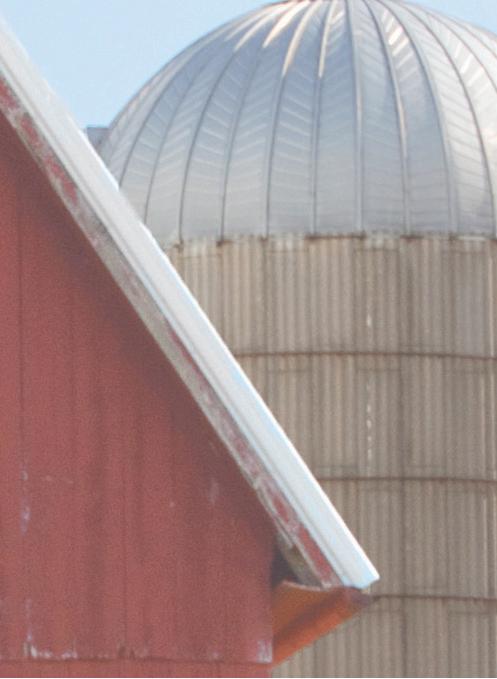
So, when the Malden Fire Department got the call for a fire at the Linker shop, they went to work to save the Rumely.
With the door to the shop locked, they had to chop holes through it to fit firehoses through.
Steve Linker’s grandfather, Bill Linker, bought this 1935 Case CC tractor new in 1935. After the tractor was sold at auction, the family lost track of it until another relative, Harold Steele, told Steve (seen here with his mother, Joyce) that his sister, Marion Lines, and her husband had purchased it. Harold asked Steve if he wanted the tractor back, and when Steve said yes, it was in his shed the next morning.
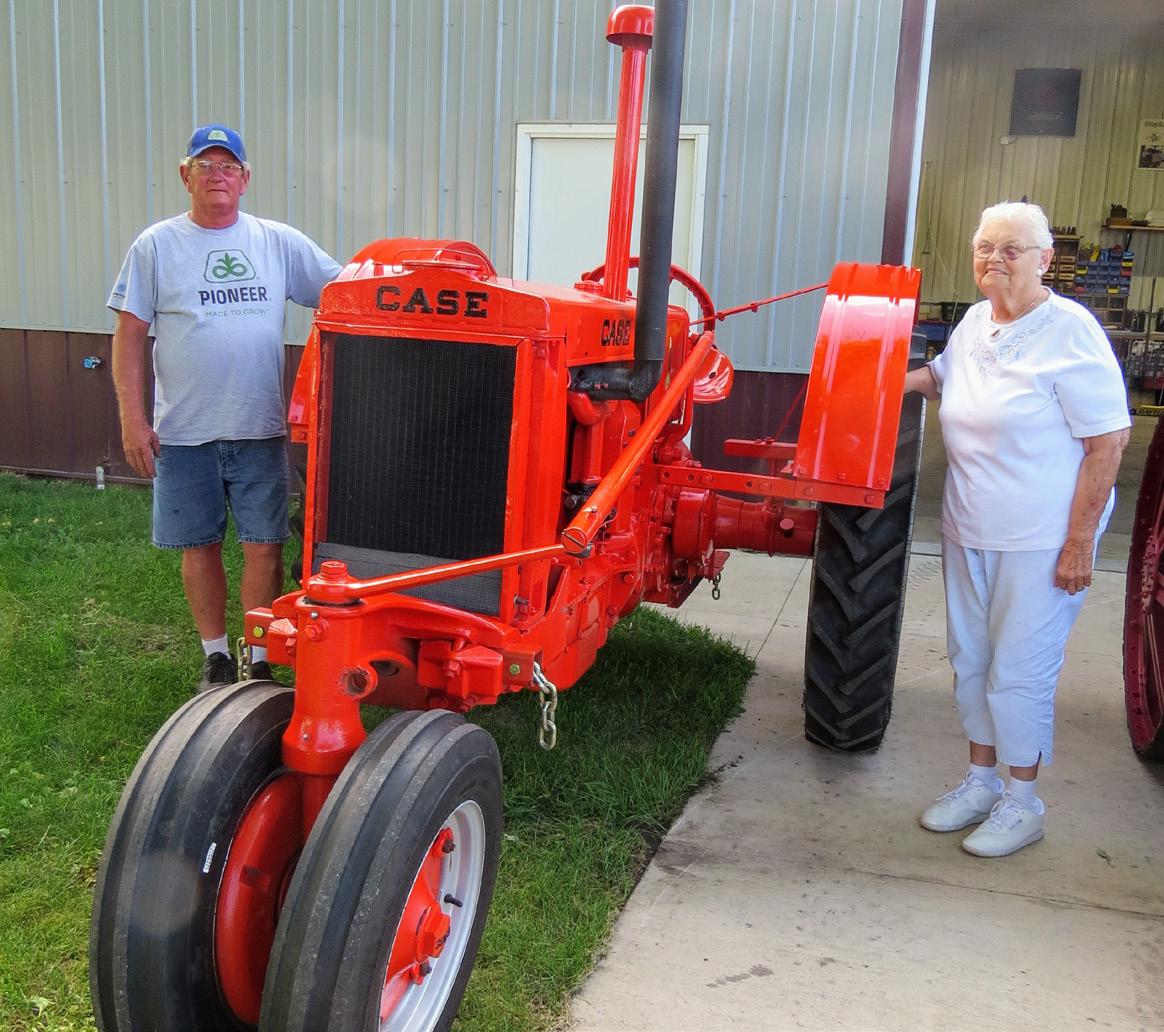
“Jackson poked the holes and put the hoses through and said, ‘Don’t move those hoses,’” Steve said.
A neighbor called Steve.
“I was just pulling into the veterinarian’s office in Princeton, and he said, ‘You better get back here fast — the shop is on fire,’” Steve said.
As he raced home, his thoughts were on the Oil Pull. It, along with another, smaller tractor, were the only two in the shop in Malden.

“I could see the smoke from out on Route 34. I didn’t think we’d ever save the Rumely. It’s all oil cooled and it burns oil and it had probably 30 gallons of gas in it,” Steve said.
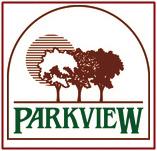
Joyce was on her way home and had stopped in Men dota to visit family when a neighbor called to tell her the shed was on fire.
“We got outside of Mendota and we could see the smoke from there, the fire was that big,” she said.
The shed was a complete loss, but the Linkers and the firefighters managed to save some of the antique singlecylinder gas engines that Joyce and Jerry collected.


The Rumely was also saved, but Steve had doubts about whether it could be restored. The tractor had an arched wood roof, held up by wood supports, and wood blocks to brace other parts of the engine.
LINKER cont’d to page 32
Joyce Linker and her, Steve, stand by the 1928 Rumely Oil Pull 40-60 Z that was almost lost when a shed near Joyce’s home caught fire in 2019. Firefighters were able to save the tractor, though it did suffer some damage. The Rumely is one of four tractors that Steve and his mother take to tractor shows, parades and other events.




To the untrained eye, the Rumely looks like it could go to work right now, but Steve still sees the scars of the fire.
“It’s still in bad shape. You can see it was burned up,” he said.
Joyce usually joins her son at the shows and parades. For her, tractors are not only a hobby, but something that runs in her family, as well.
“I started out going to shows with my husband and our kids, who were just little then. We just had gas engines at that time,” she said.
It was through her father, Verner Hensel, that Steve came to have the Rumely and a 1919 Russell Model B. Joyce’s father gave her both of the tractors be fore he died in 1995.


Sharing the stories of the family tractors and an swering questions — about family, farming and vintage iron — is the part that Steve enjoys most about the many shows and parades that he and his mother and their tractors attend.






“The thing about tractors like these is that each one is unique, each one has its own story,” he said. n
Jeannine Otto can be reached at 815-410-2258, or jotto@shawmedia.com. Follow her on Twitter at: @AgNews Otto.
Do you have a classic tractor that looks as good as new? Or is your antique power rough and rusted but still ready to go? Either way, we’d like to share your story with fellow farmers and fans of old farm machines in Ag Mag’s “Still Crankin’ After All These Years,” a feature that celebrates the people who keep farm history alive through their classic tractors.
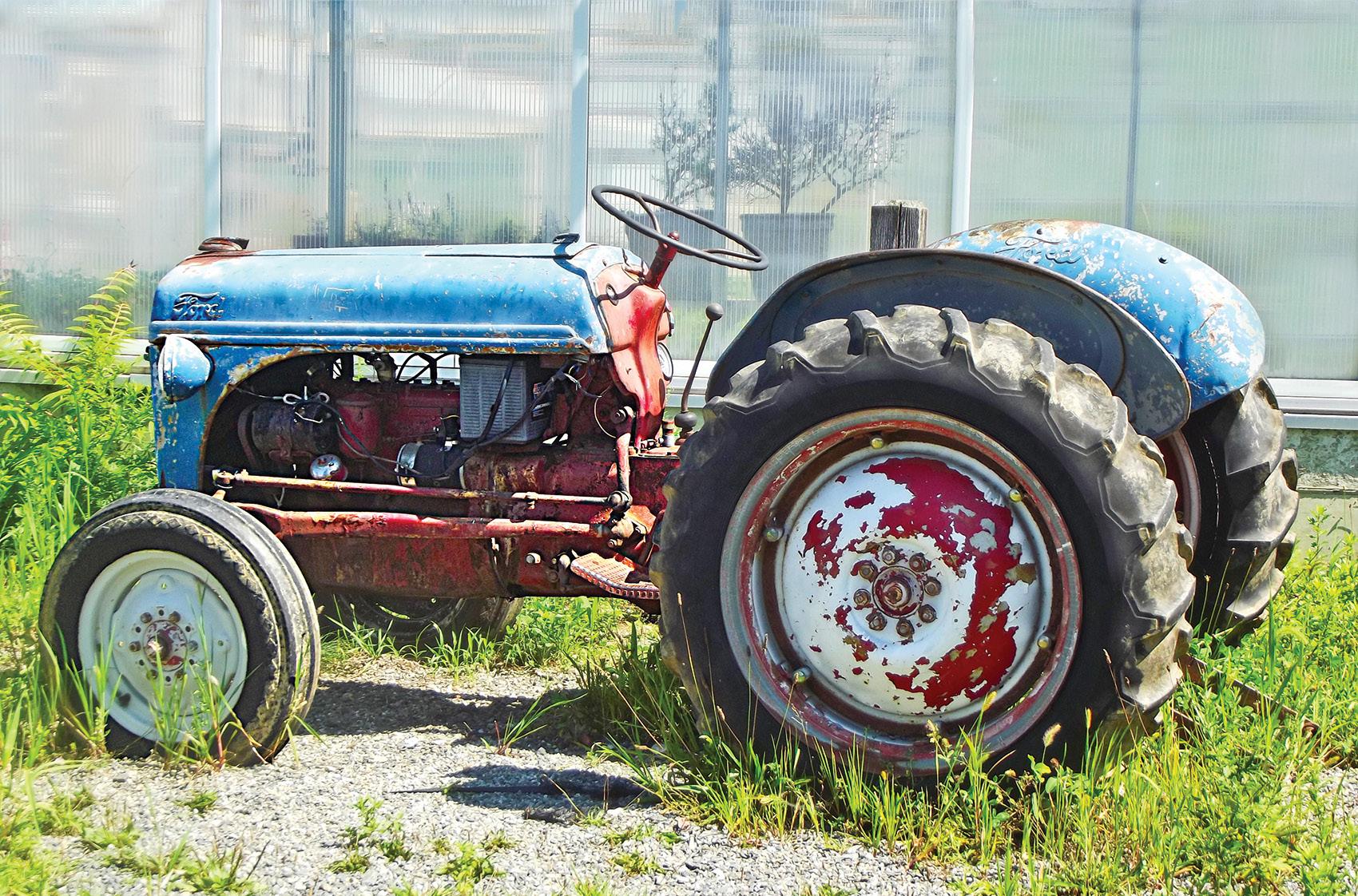
These are the people who will work on their tractor until to the cows come home. They’ll swap stories and swap parts. They’ll scour websites and catalogs and tractor shows to hunt down that hard-to-find piece for their project. They’ll do what it takes to get that tractor to go the extra mile.

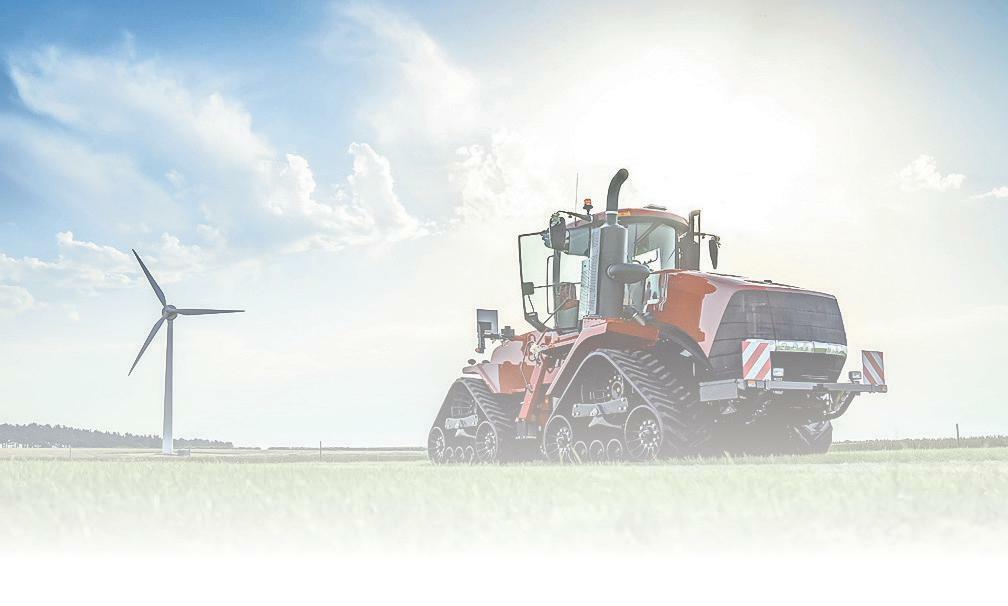
And when they get those machines to pop and sputter and rumble and roar to life, it’s like music to their ears.
Maybe it’s the tractor Grampa owned, or the one Pa taught his son to drive. Maybe it’s a tractor Ma road to town. Whether you’ve rebuilt or restored a ride, or you’ve got a project in progress, drop us a line and let us know about it, and we may just share your story in a future issue of Ag Mag. Email ccutter@saukvalley.com, call 815-632-2532, or write to Northern Illinois Ag Mag, 113 S. Peoria Ave., Dixon, IL 61021.


Old tractors never retire. They just get better with age. Just ask fans of the old iron. They’re dedicated to Deeres that endure, they can’t get off their Case, they keep their Oliver alive, and their Minnie-Mo can steal the show.

Some are casual collectors and some are dedicated enthusiasts, while others are just horsepower hobbyists, and then there are the farmers who are taking care of an old friend that was part of their life and livelihood. Some like to restore their rides while others keep them running, rough and ready.
They’re the people who love old tractors — and they’re not alone.

Tractor clubs are as much a part of the rural landscape as the tractors that re shaped it. They celebrate the machines that plowed the land, sowed the seeds, and harvested the crops — and like the tractors they celebrate, they come in different styles and sizes. Big clubs, little clubs, local clubs, national clubs. Some celebrate a particular tractor maker, while others welcome all makes and models. Some are strictly for tractors and some embrace antique engines too. But they all have one thing in common: An appreciation for the big wheels that keep on turning.
Club members are proud of their machines, whether they’re fully restored or as-is. They enjoy talking shop, telling tales about their tractor, and swapping stories about how they rescued it. Clubs are a place where members can enjoy the fun and fellowship of making new friends and meeting up with old ones. They host shows to share their pride with the public — both city folk and country kin — and teach them about the history and heritage of their horsepower, and maybe even cultivate some future tractor enthusiasts and club members. Some clubs host trac tor rides where a parade of pride ambles along country roads. Some club events even double as fund raisers for local ag programs.
The history of the heart of the country — where enterprising entrepreneurs planted the seeds that grew into tractor companies, and tons of tractors rolled and rumbled across the countryside carving and cultivating the land — makes the Midwest a prime location for tractor clubs. Most prominently, John Deere developed the first steel plow in 1837 in Grand Detour, a small, quiet town along the Rock River in south ern Ogle County, and later brought his business to Moline, where it subsequently expanded operations all over the Quad Cities and Eastern Iowa. Moline also lends itself to the Minneapo lis-Moline line, which started as the Moline Plow Company before merging with a couple of Twin Cities lines in 1929 to give it the name it’s know by today. Both International Harvester and Case established their roots not far from Northwest Illinois. IH began in Chicago around the turn of the 20th century with the merger of the Deering and McCormick companies, and there was once an IH plant in Rock Falls. And the J.I. Case Co. started in Racine, Wisconsin, in 1842.
On the following pages is a list of some of the tractor clubs throughout northern Illinois, and a little beyond.





Phone: 1-309-314-0783

Online: http://ae-ta.com or find Antique Engine & Tractor Association, Inc.” on Facebook
The Antique Engine & Tractor Association (AETA) began as a branch of the Early Day Gas Engine and Tractor Association in 1959, a national organization with chapters throughout the U.S. In 1970, AETA became an independent organization and was incorporated as a non-profit organization in Illinois. The group’s goal is “To promote the collection, restoration, preservation and exhibition of gasoline and oil engines, gasoline and steam tractors, power-driven farm machinery and other equipment of historical value.” The clubs has grown through the years, boasting more than 200 members. In 2008, Bill and June Cole of Hillsdale donated 40 acres to the group, which the group uses to hold shows. AETA’s biggest even is its annual three-day Working Farm Show, where members harvest corn and beans with mid-1900’s equipment, thresh oats or wheat, run a saw mill, plow, and demonstrate vintage gas engines. Hundreds of tractors, garden tractors and many gas engines are part of the show, plus other ag memorabilia. An nual shows had been in the Atkinson and Geneseo areas before moving to property where state Route 92 crosses the Rock River near Joslin between Geneseo and Hillsdale. The group supports local FFA chapters’ tractor restoration projects and hosts events for children and youth at its annual show. 2023’s show is scheduled for Sept. 15-17. The club also has a young collectors group for club members’ children.
Franklin Grove Online: lhaea.org, myneatmms@yahoo.com The Living History Antique Equipment Association has put on shows for 42 years, with the most recent one Aug. 6 and 7, a half-mile south of Franklin Grove on Whitney Road. Among the show’s attractions, a fleet of Minneapolis-Moline tractors and equipment. The annual show also includes demonstrations, parades, straw scrambles and a petting zoo. The club is operated by a five-person board of directors with a president, vice president, secretary and treasurer.
Indian Valley Antique Club, Princeton
Online: facebook.com/indianvalley.antiqueclub.1
Indian Valley Antique Club’s annual show is held in July, two miles south of Princeton. According to its Facebook page, the club is an organization that is “resurrecting the past, for the future.” Club meetings, typically at the end of each month, are announced on its Facebook page.
complete the history of the IH company.” The club’s major events are a national auction in November, a winter convention, and a Red Power Roundup in June.
Stephenson County
Engine Club, Freeport Online: Facebook, www.thefreeportshow.com
Harvest Fest at Woodstock Square, the Tractors for Charity show in McHenry, and the Cody’s Farm and Orchard Market Fall Festival in Marengo.
Online: Facebook, deervalleycollectors.com
International
Mailing address: P.O. Box 445, Oswego, IL 60543

Phone: 630-816-0604
Online: nationalihcollectors.com and on Facebook

The northern Illinois chapter is headquartered in Oswego, and there are 43 others throughout the na tion, and one more in Great Britain. The central Illinois chapter is out of St. Joseph, and a southern Illinois one is based in Pickneyville. The club began in 1990 and has more than 7,000 members. Its purpose, ac cording to its website is “to establish the International Harvester Collectors as an identity to which collec tors of IH products can relate: promote IH collecting, restoration and show displays through communica tion among members; help preserve, research and


The not-for-profit educational organization helps preserve both farming and transportation heritage through several events throughout the year. The club puts on a threshing show each year (its most recent show was Aug. 6 and 7). The club also operates an antique railroad engine and cars that run on an old right-of-way, and houses a 130-ton Cooper Corliss steam engine, which is one of the largest flywheel engines in the nation, near the Sil ver Creek Museum, 2954 S. Walnut Road, Freeport.


Association of Illinois, Union Online: Facebook, mchenrycfb.org/mcfb-friends/ mcafeai
Formed in 1999, the McHenry County Farm Equip ment Association of Illinois is made up of tractor enthusiasts within the county. The club shows tractors at annual festivals such as the McHenry County Fair, Harvard Milk Days, the Sycamore Steam Show, the Huntley Farmers Market, the
According to its website, the Deer Valley Collectors club “provide[s] information, services and a forum of fellowship for its members in support of their common interest in the preservation and collection of tractors, equipment, and memorabilia of the bygone era.” The club began in 1991 as the Fatherland Deere Collectors. It hosts the Gathering of the Green each summer at the Mississippi Valley Fair in Davenport, Iowa, as well as other Deere-related tractor events in the Quad Cities.
Online: Facebook
Like the Quad City Club, this group showcases John Deere tractors at shows throughout northwest Illinois.
Online: Facebook, sites.google.com/site/ilvalley2cc
Established in 1989, the Illinois Valley Two-Cylinder Club has more than 120 families as members throughout north-central Illinois. These tractors stopped coming out of the assembly lines nearly 50 years ago, lending to their historical value.
